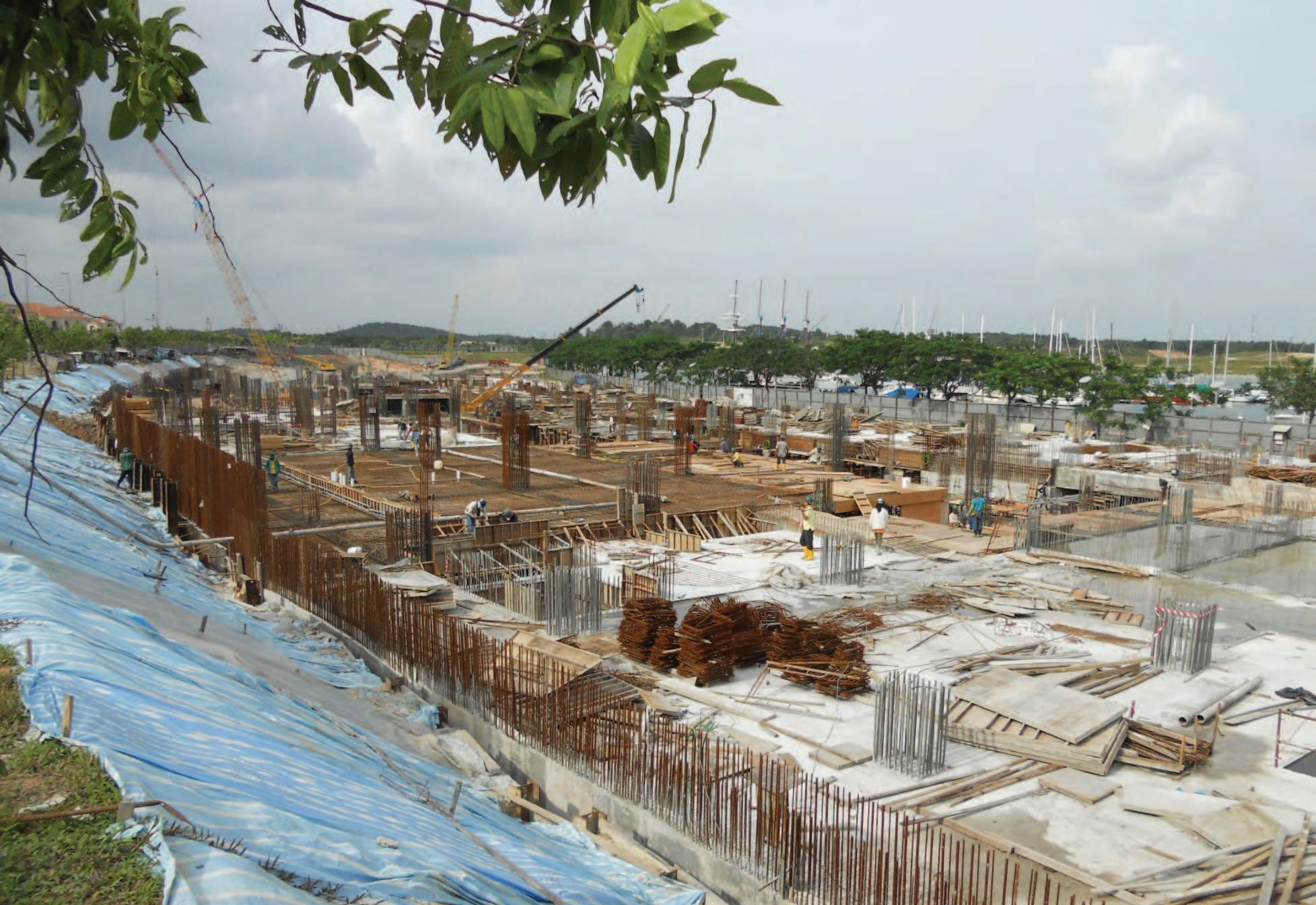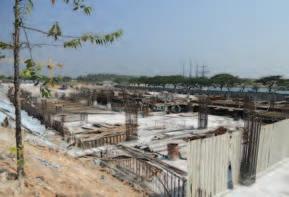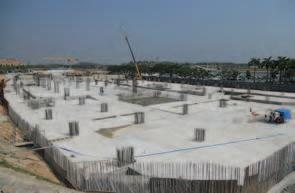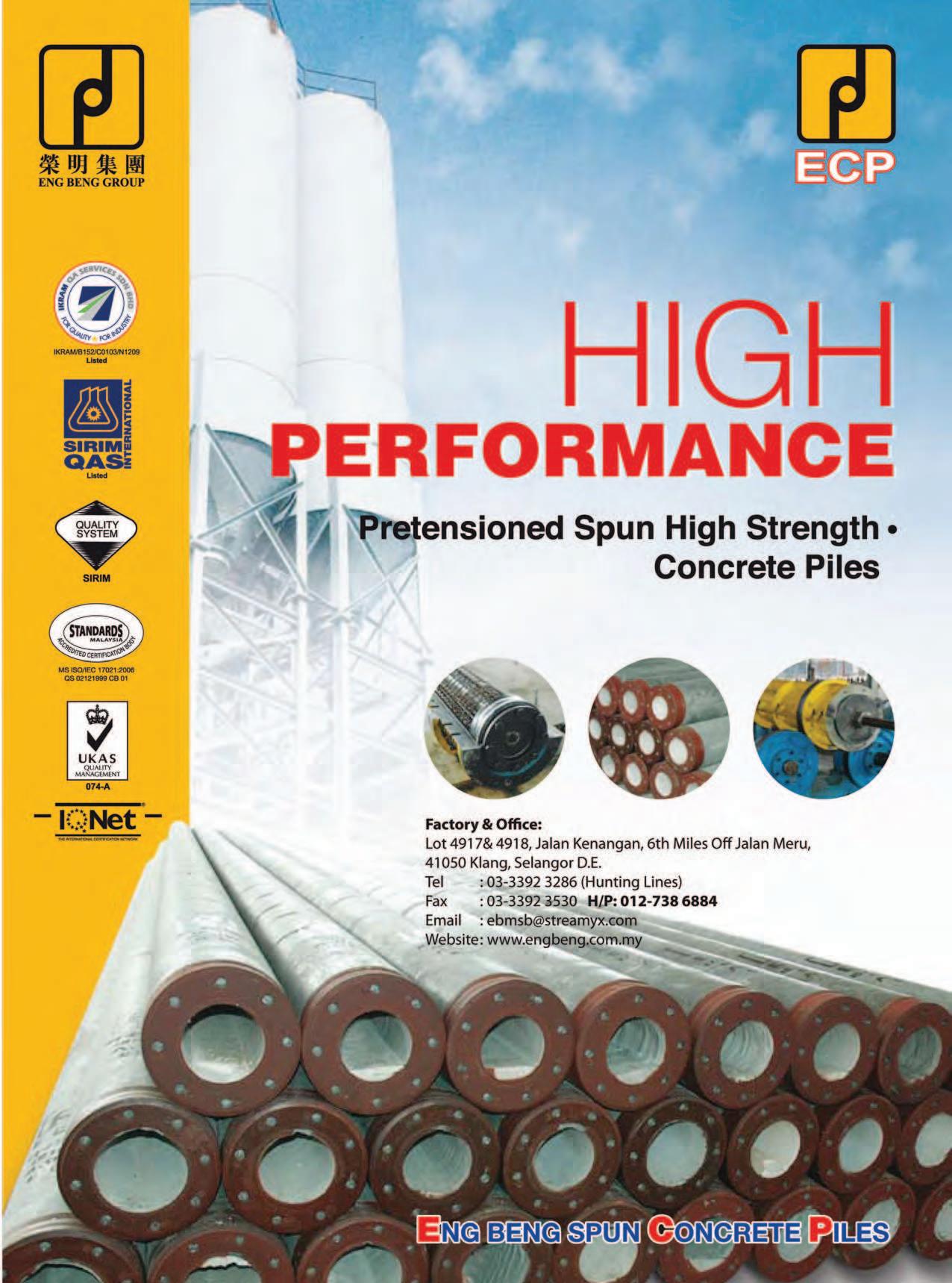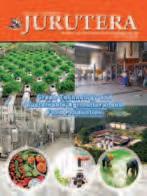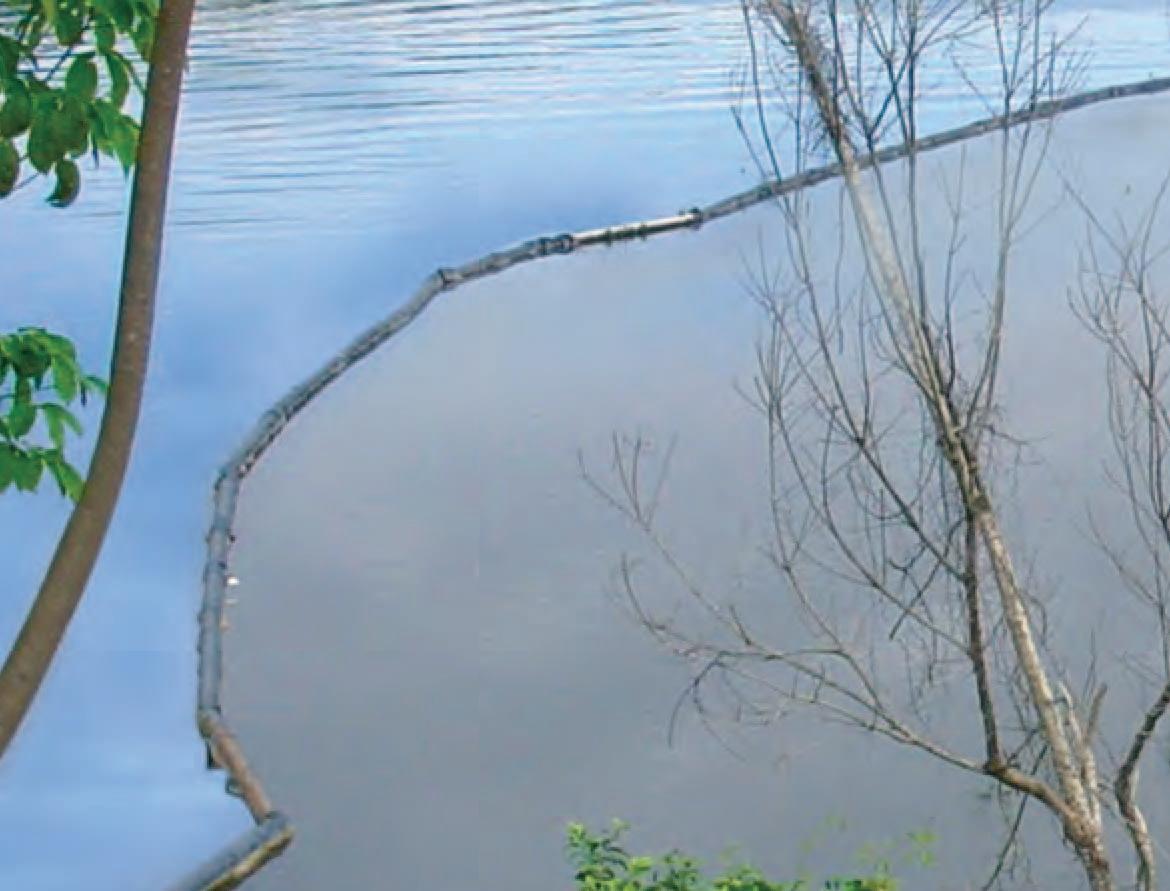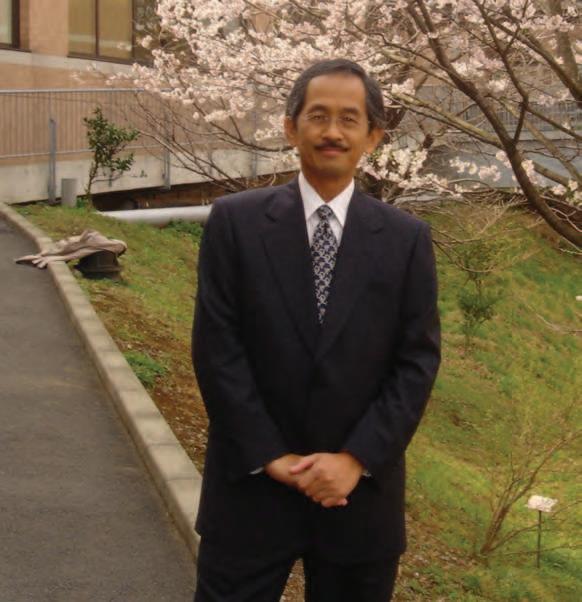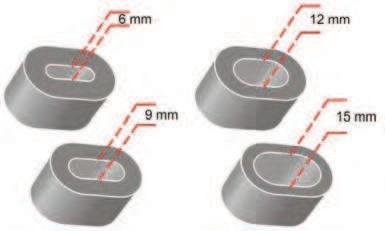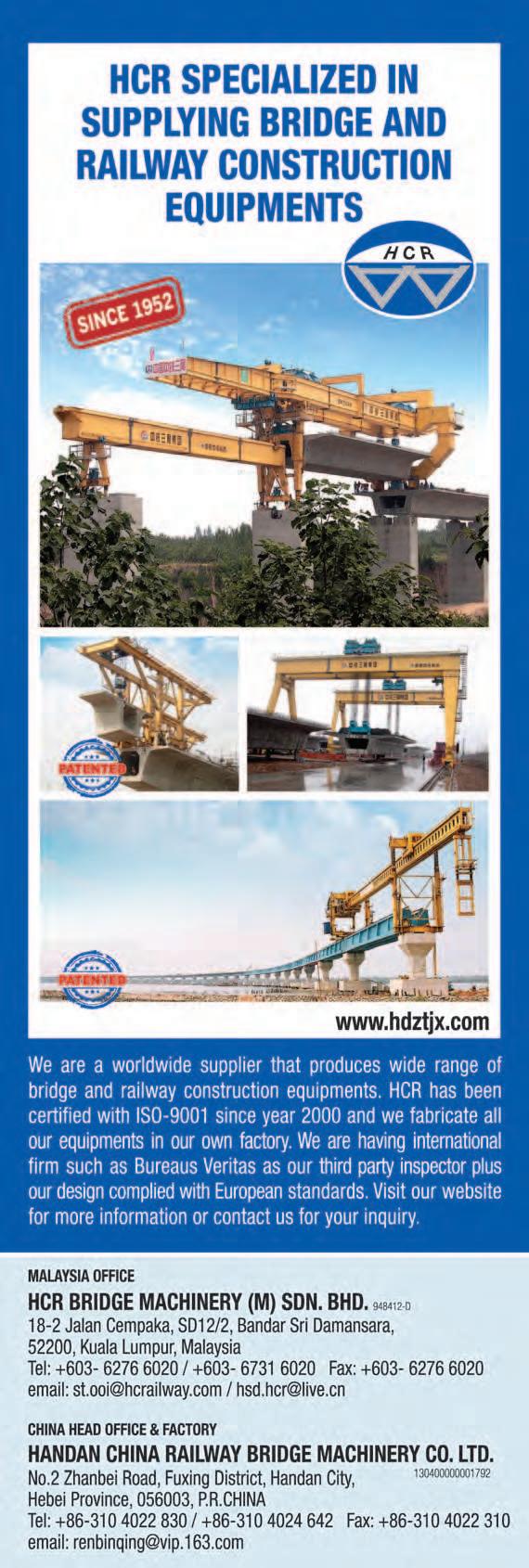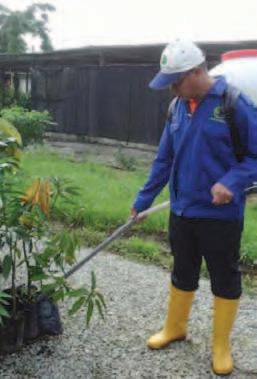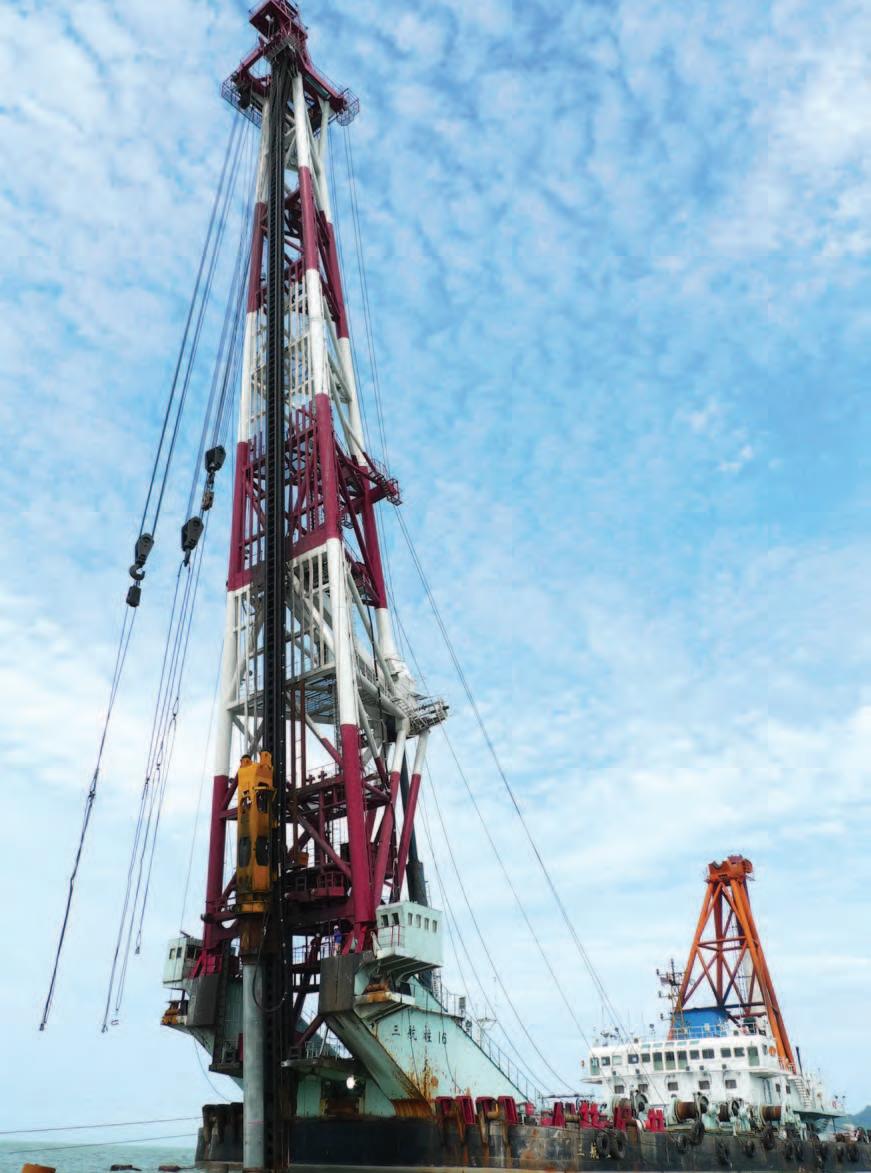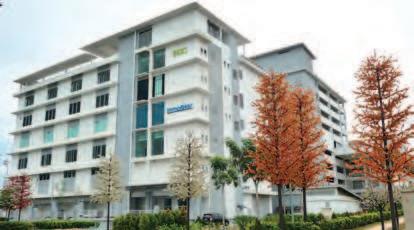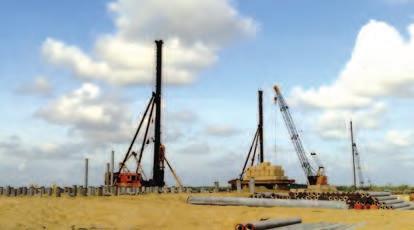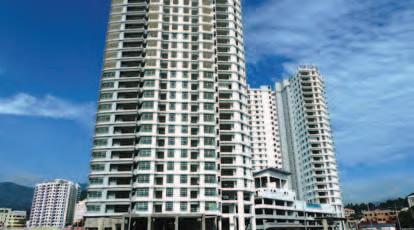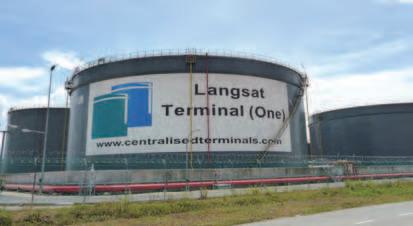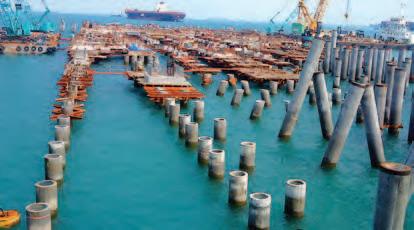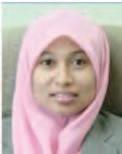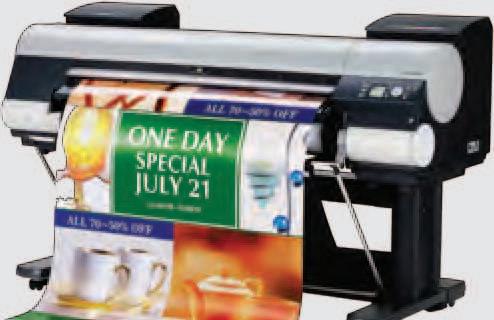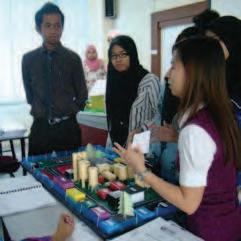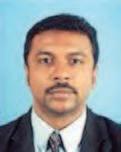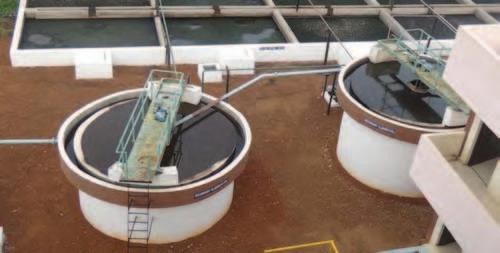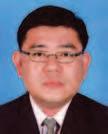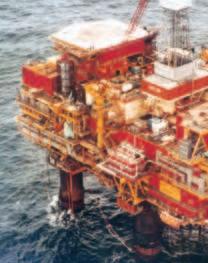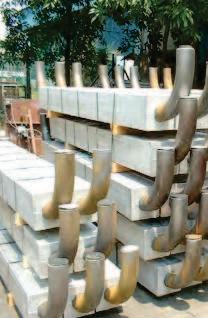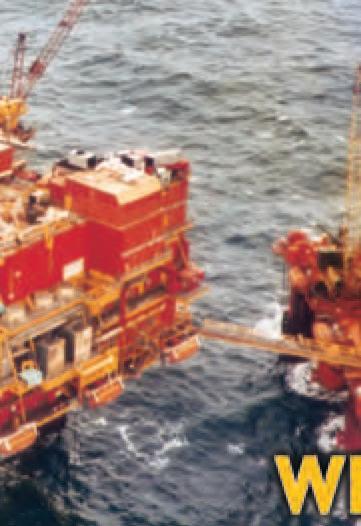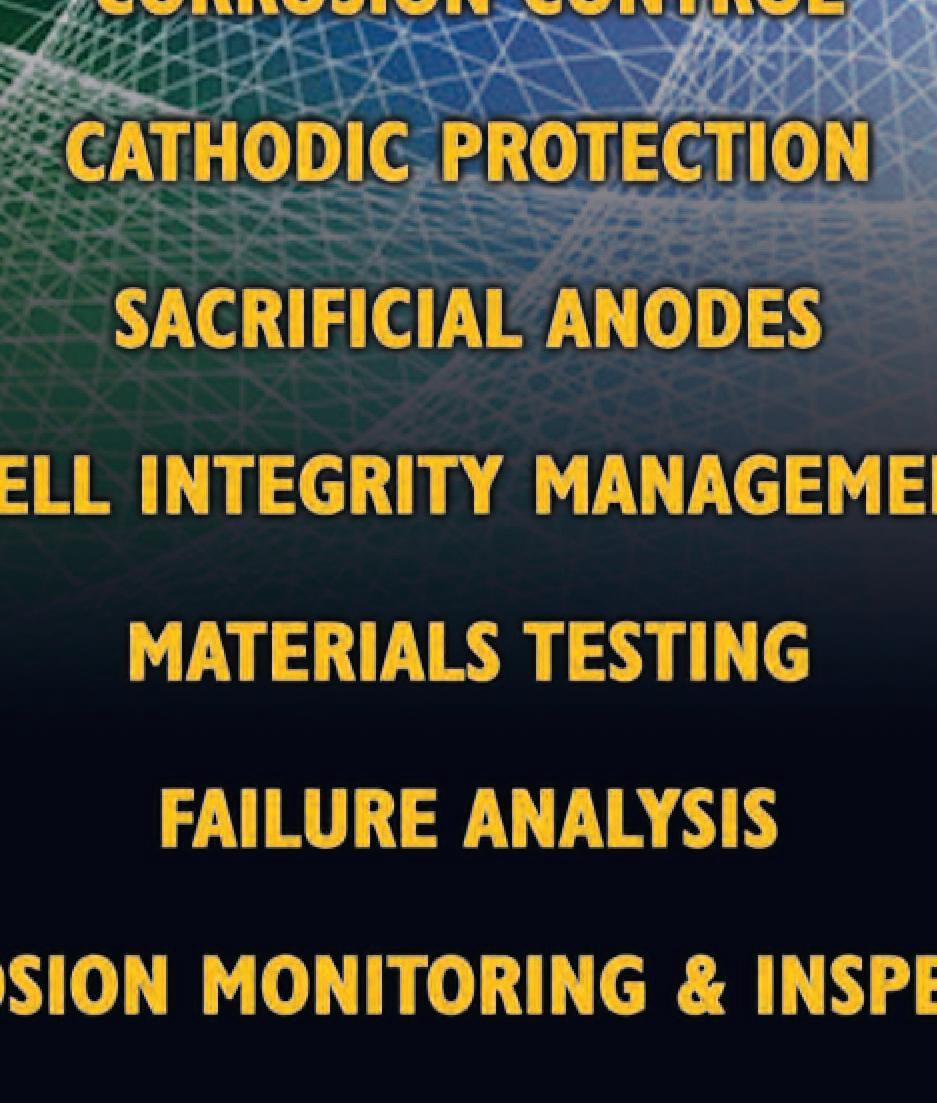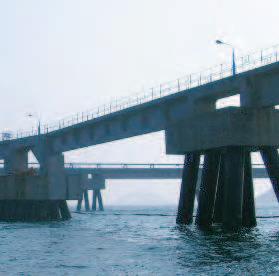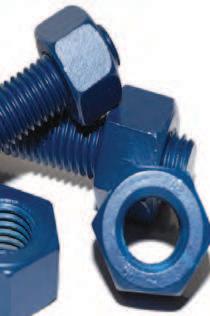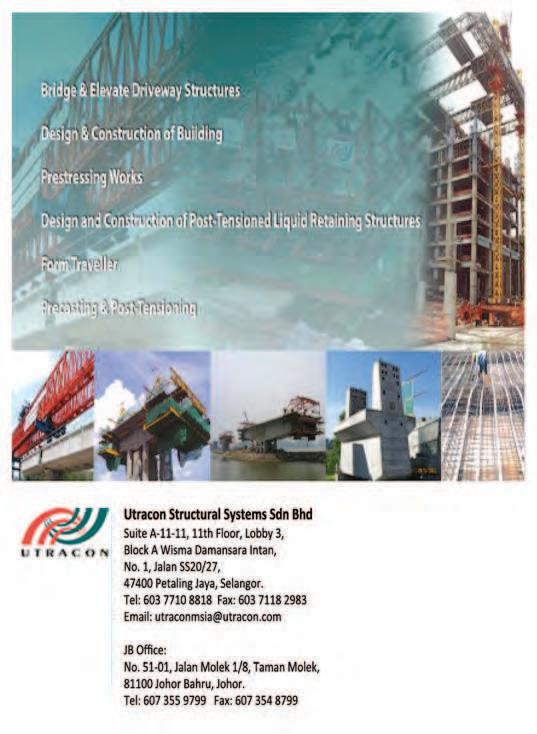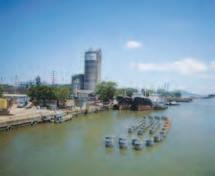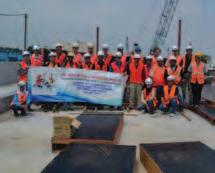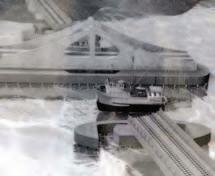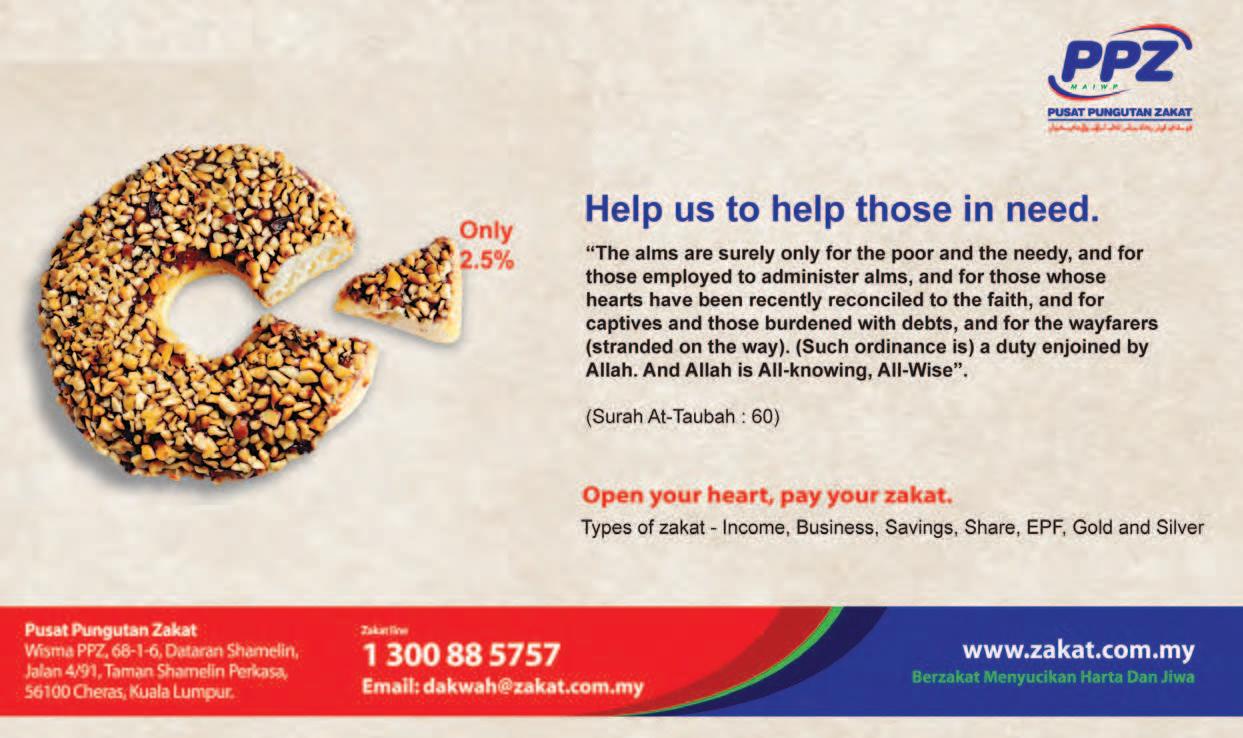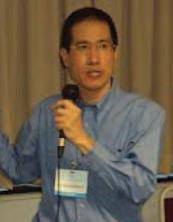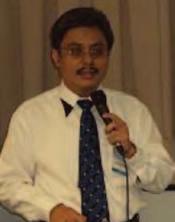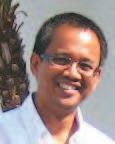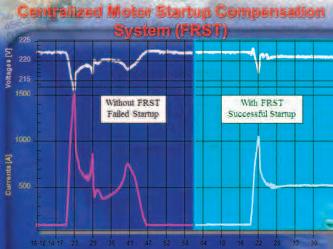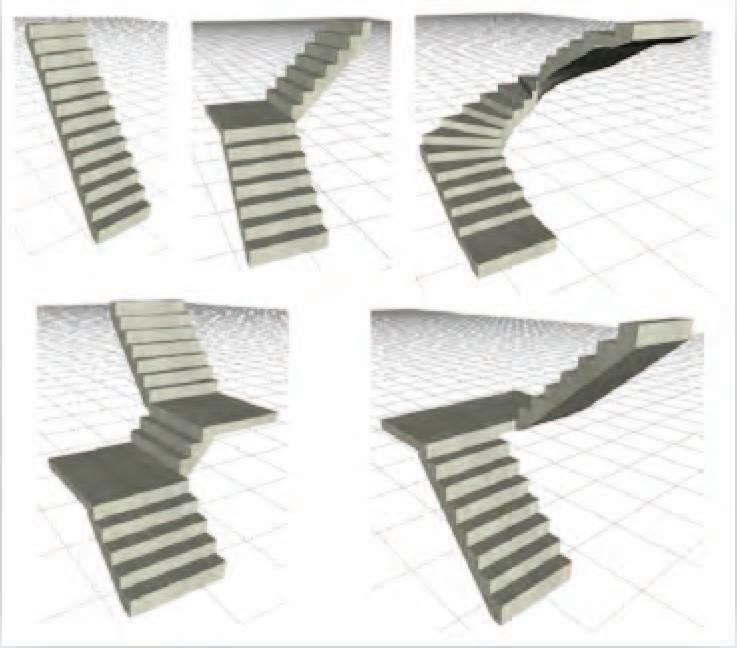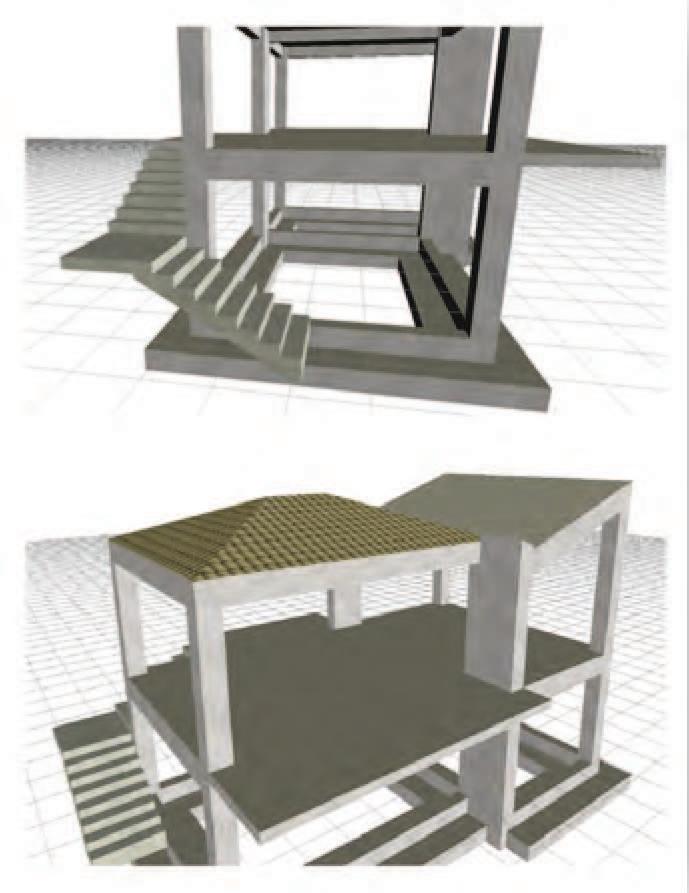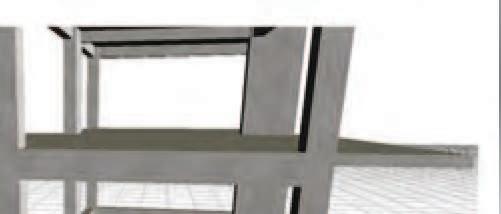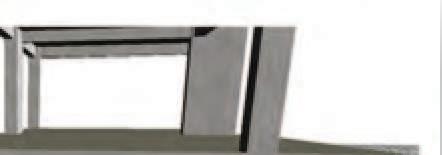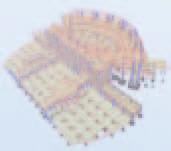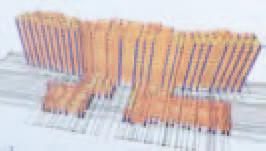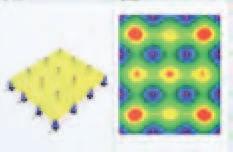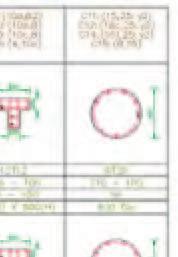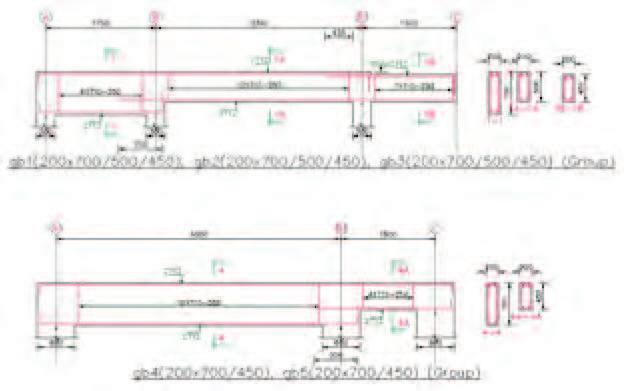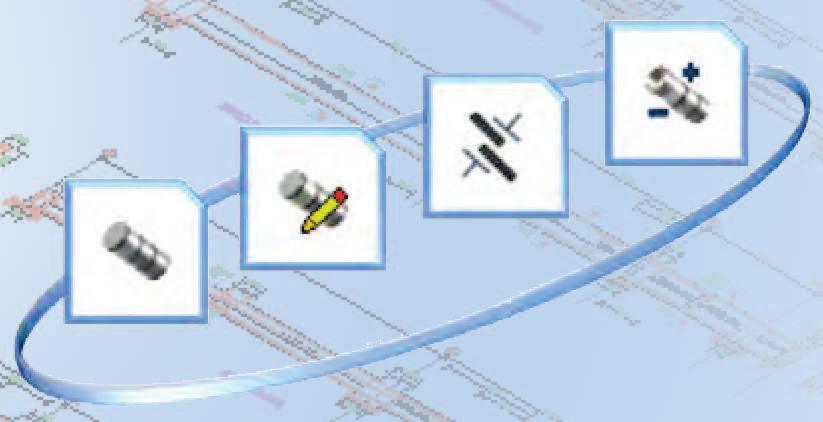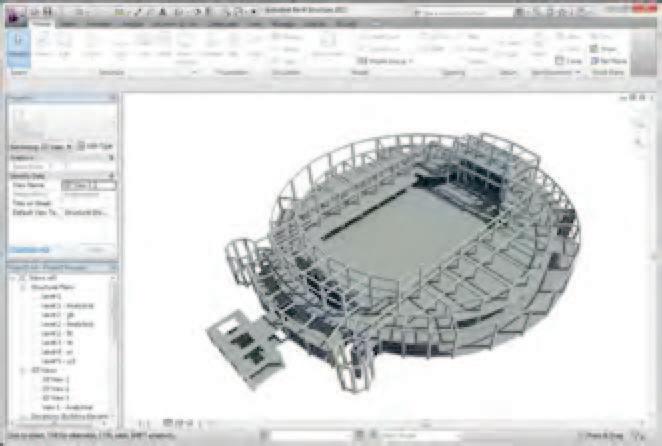JURUTE
Number 12, December 2011 IEM Registered on 1 May 1959
MAJLIS BAGI SESI 2011/2012 IEM COUNCIL SESSION 2011/2012
YANG DIPERTUA / PRESIDENT:
Ir. Chen Kim Kieong, Vincent
TIMBALAN YANG DIPERTUA / DEPUTY PRESIDENT:
Ir. Choo Kok Beng
NAIB YANG DIPERTUA / VICE PRESIDENTS:
Ir. Prof. Dr Ruslan bin Hassan, Y.Bhg. Dato' Ir. Hj. Abdul Rashid bin Maidin, Ir. Lee Weng Onn, Ir. P.E. Chong, Y.Bhg. Dato' Ir. Lim Chow Hock, Ir. Prof. Dr Wan Mahmood bin Wan Abdul Majid, Ir. Yim Hon Wa
SETIAUSAHA KEHORMAT / HONORARY SECRETARY:
Ir. Prof. Dr Lee Teang Shui
BENDAHARI KEHORMAT / HONORARY TREASURER:
Ir. Prof. Dr Chiang Choong Luin, Jeffrey
WAKIL AWAM / CIVIL REPRESENTATIVE:
Ir. Gunasagaran a/l Kristnan
WAKIL MEKANIKAL / MECHANICAL REPRESENTATIVE:
Y.Bhg. Dato' Lt. Gen. (R) Ir. Ismail bin Samion
WAKIL ELEKTRIK / ELECTRICAL REPRESENTATIVE:
Ir. Mohd. Aman bin Hj. Idris
WAKIL STRUKTUR / STRUCTURAL REPRESENTATIVE:
Ir. Yam Teong Sian
WAKIL KIMIA DAN DISIPLIN LAIN / CHEMICAL AND OTHERS REPRESENTATIVE:
Ir. Razmahwata bin Mohamad Razalli
WAKIL LAIN LAIN DISPLIN / REPRESENTATIVE TO OTHER DISCIPLINES:
Ir. Assoc. Prof. Dr Cheong Kuan Yee
WAKIL MULTIMEDIA / MULTIMEDIA REPRESENTATIVE:
Ir. Noor Iziddin Abdullah bin Hj. Ghazali
AHLI MAJLIS / COUNCIL MEMBERS:
Ir. Prof. Dr Lee Sze Wei, Ir. Tuan Hj. Mohd. Ali bin Yusoff, Ir. Yee Yew Weng, Ir. Mah Soo, Ir. Dr Ahmad Anuar bin Othman, Ir. Kok Yen Kwan, Ir. Yau Chau Fong, Ir. Wong Chee Fui, Ir. Mohd. Khir bin Muhammad, Y.Bhg. Dato' Ir. Hj. Mohd. Isa bin Hj. Sarman, Ir. Assoc. Prof. Dr Marlinda bin Abd. Malek, Ir. Zainuddin bin Mohammad, Ir. Lai Kong Phooi, David, Y.Bhg. Dato' Ir. John Chee Shi Tong, Ir. Gopal
Narian Ku y, Ir. Tan Yean Chin, Y.Bhg. Dato' Ir. Ahmad Murad bin Hj. Omar, Ir. Ng Shiu Yuen, David, Ir. Kim Kek Seong, Ir. Chong Chew Fan, Ir. Dr Tan Kuang Leong, Ir. Lau Yuk Ma, June, Ir. Dr Norlida bin Buniyamin, Ir. Ishak bin Abdul Rahman, Ir. Hoo Choon Sean, Y. Bhg. Dato Ir. Samsuddin bin Ismail
AHLI MAJLIS / COUNCIL MEMBERS BY APPOINTMENT : Dato' Ir. Hj. Mohamad bin Hj. Husin, Ir. Abdul Ghani bin Hashim, Ir. Abdullah bin Isnin
BEKAS YANG DIPERTUA TERAKHIR / IMMEDIATE PAST PRESIDENT:
Y.Bhg. Academician Dato' Ir. Prof. Dr Chuah Hean Teik
BEKAS YANG DIPERTUA / PAST PRESIDENTS:
Y.Bhg. Dato' Ir. Pang Leong Hoon, Y.Bhg. Academician Dato' Ir. (Dr) Hj. Ahmad Zaidee bin Laidin, Ir. Dr Gue
See Sew, Y.Bhg. Datuk Ir. Prof. Dr Ow Chee Sheng, Y.Bhg. Dato' Paduka Ir. Prof. (Dr) Keizrul bin Abdullah PENGERUSI CAWANGAN / BRANCH CHAIRMAN:
1. Pulau Pinang – Ir. Ng Sin Chie
2. Selatan – Ir. Mohd. Khir bin Muhammad
3. Perak – Ir. Chan Hoong Mun
4. Kedah-Perlis – Ir. Hor Tek Lip
5. Negeri Sembilan – Ir. Mohammed Noor bin Abu Hassan
6. Kelantan – Ir. Hj. Roslan bin Abdul Azis
7. Terengganu – Ir. Mohd. Azmi bin Ali
8. Melaka – Ir. Mohd. Khalid bin Nasir
9. Sarawak – Ir. Tan Khiok Chun, Alan
10. Sabah – Ir. Teo Chee Kong
11. Miri – Ir. Ting Kang Ngii, Peter
AHLI JAWATANKUASA INFORMASI DAN PENERBITAN / STANDING COMMITTEE ON INFORMATION AND PUBLICATIONS 2011/2012: Pengerusi/Chairman cum Chief Editor: Y. Bhg. Dato' Ir. Hj. Abdul Rashid bin Maidin
Naib Pengerusi/Vice Chairman: Ir. Prof. Dr Lee Sze Wei
Se ausaha/Secretary: Ir. Lau Tai Onn
Ketua Pengarang/Chief Editor: Ir. Prof. Dr Lee Sze Wei
Pengarang Bule n/Bulle n Editor: Ir. Ong Guan Hock
Pengarang Prinsipal Jurnal/Principal Journal Editor: Ir. Assoc. Prof. Dr Marlinda bin Abdul Malek
Pengerusi Perpustakaan/Library Chairman: Ir. CMM Aboobucker
Ahli-Ahli/Commi ee Members: Ir. Yee Thien Seng, Ir. Tan Yean Chin, Ir. Chin Mee Poon, Ir. Prof. Dr Mohd. Saleh bin Jaafar, Ir. Hj. Look Keman bin Sahari, Ir. Mohd. Khir bin Muhammad, Ir. Yee Yew Weng, Y. Bhg. Datuk Ir. Prof. Dr Ow Chee Sheng, Ir. Cheong Loong Kwong, Allen, Ir. Prof. Dr Arazi bin Idrus, Ir. Tey Choo Yew, Calvin, Engr. Abi Sofian bin Abdul Hamid, Engr. Shuhairy bin Norhisham, Engr. Abul Aswal bin Abdul La ff
IEM Secretariat: Nor Aziah Budin, Nurul Aida Mustafa
THE INSTITUTION OF ENGINEERS, MALAYSIA
Bangunan Ingenieur, Lots 60 & 62, Jalan 52/4, P.O.Box 223, (Jalan Sultan), 46720 Petaling Jaya, Selangor Darul Ehsan. Tel: 603-7968 4001/4002 Fax: 603-7957 7678 E-mail: sec@iem.org.my Homepage: h p://www.myiem.org.my
Ir.KumarSubramaniam, Chairman, Agricultural and Food Engineering Technical Division
are being made by the Malaysian government to develop the agriculture and agro-food industry into the third engine of growth for the Malaysian economy. The agrofood industry is reaching out globally and the government is suppor ng this effort under the Na onal Agro-Food Policy 2011-2020 which consists of four main strategies, namely,
• to ensure adequate food supply,
• to increase the value-add of the agro-food sector,
• to complement and strengthen the supply chain
• to provide trained labour for the agriculture sector.
Untapped poten al in the agro-food industry includes the use of food as medicine. The use of chemical fer lizers in agriculture has caused soil deple on and this has led to crops containing fewer nutrients. The solu on is to revert back to organic and sustainable agriculture. Studies have shown that organically grown foods are healthier. Currently, the agrofood products that are being produced locally include:
• Palm oil based vegetable oils and products
• Halalcer fiedagroanddairycommodi es,foodingredients and addi ves
• Halal and non-halal snack foods
• Roselle juice and cordial foods
• Processed bird’s nests
• Fish feeds and animal feeds
Agricultural and Food Engineering has contributed to the industrializa on of the Malaysian agriculture and agro based industry. Our natural resources are limited and it has become necessary to produce more food with less resources. Our engineers must invent improved technologies to process and produce food products with environmentally sustainable solu ons to treat and manage the byproducts and wastes. Changing global condi ons are demanding for increased agriculture and food produc on within a limited land bank, as well as to increase the efficiency and quality of services in the food preserva on and supply chain. ■
Effec ve from 1 January 2012, defaul ng members in arrears of subscrip on will be considered as suspended members with all benefits removed. Consequently, these members will not be allowed to evening talks and will be charged the non-members' fee at the entrance. They will also not be en tled to register for visits/courses/seminars/conferences and any paid event of the IEM at members’ registra on fee.
To avoid this, all IEM members are advised to se le their annual subscrip on on me and the deadline for payment each year is on 31 January.
Thank you.
Execu ve Commi ee of the IEM Council
by Ms. Suvarna Ooi
prices have been increasing in recent years. Between March 2007 and March 2008, global food prices increased by an average of 43% as reported by the International Monetary Fund. According to the National Inflation Association in the United States, the average American family currently spends only 13% of their total annual expenditure on food.
However, it is projected that Americans will spend as much as 40% of their annual expenditures on food by 2015. The World Watch Institute concluded that the growth of biofuel, the impact of climate change and the rising prosperity of developing nations are all driving retail food prices to their biggest annual increase in 30 years.
Closer to home, international aid agencies are increasing worried by the recent dramatic rise in food costs in Asia, particularly the price of rice. World stocks of grain are at their lowest for more than 20 years and international rice supplies are at their lowest since 1976. To make matters worst, many of the world’s leading rice exporting countries are limiting the sale of rice or banning them altogether.
With the world population ever increasing, estimated by the United Nations to reach 10 billion by 2050, food production will become even more critical as time goes by. As such, JURUTERA sought out Emeritus Prof. Dato’ Ir. Muhamad Zohadie Bardaie, Chairman and Director of Perunding Bakti Sdn Bhd and former Vice Chancellor of Universiti Putra Malaysia (UPM), for his thoughts on how we should address some of these issues.
Muhamad
Bardaie,
holds a Ph.D. degree in Agricultural/Environmental Systems Engineering from Cornell University, USA. He re red as a professor in engineering from Universi Putra Malaysia (UPM) in December 2006. In 2009 he was conferred the ‘Emeritus Professor’ in Bio-systems Engineering by the Faculty of Engineering, Universi Putra Malaysia of Selangor.
According to him, one possible solution could come from green technologies in agricultural and food production. This would involve the use of innovative technologies that have the potential to steer agriculture along a sustainable path, while at the same time contribute to the advancement of the economic and efficient production of safe and high quality food. This also includes sustainable agriculture, the practice of farming using principles of ecology, which can be defined as an integrated system of plant and animal production practices having a site specific application that will last over the long term.
Dato’Muhamad Zohadie pointed out that several research institutions and universities in Malaysia have carried out studies on some of the green technologies that are available in the country. One of the more interesting R&D initiatives in agricultural and food production that he has encountered is the concept of “vertical farming”. This refers to the cultivation of plant or animal life within skyscrapers, or on vertically inclined surfaces.
Emeritus Dato’ Ir. Prof.
Zohadie
Ph.D., P.Eng. Dato’ Zohadie
Dato’ Zohadie's visit to Japan during the Cherry blossom season
He said, “The strongest proponent of vertical farming is Dr Dickson Despommier, a professor of environmental health sciences and microbiology at Columbia University in the United States. He argued that vertical farming is legitimate due to environmental reasons and claimed that the cultivation of plant and animal life within skyscrapers will produce less embedded energy and toxicity than plant and animal life produced on natural landscapes.”
Vertical farming promotes the mass cultivation of plant and animal life for commercial purposes in skyscrapers. In theory, the latter could also produce fish, poultry, fruit and vegetables using advanced greenhouse technology such as hydroponics and aeroponics. And unlike traditional farming, indoor farming can produce crops year-round. All-season farming multiplies the productivity of the farmed surface by a factor of four to six depending on the crop.
Furthermore, the crop would not need to be transported between production and sale as it would be sold in the same infrastructure in which it is grown. This will result in less spoilage, infestation and energy required compared to conventional farming. Vertical farming would also reduce the need for new farmland due to overpopulation, thus saving many natural resources currently threatened by deforestation or pollution.
Dato’ Muhamad Zohadie said, “Dr Despommier argued that the technology to construct vertical farms currently exists and also stated that the system can be profitable and effective. Developers and local government from various cities in the world, including South Korea, United Arab Emirates, United States, Canada, France, India, and China, have expressed serious interest in establishing vertical farms. In fact, the Illinois Institute of Technology is now crafting a detailed plan for Chicago.”
He added, “However, it has been suggested that prototype versions of vertical farms should be created first, possibly at large universities interested in the research of vertical farms, in order to prevent failures. Perhaps one of our local research universities would consider the suggestion with a grant from the federal government.”
nitrogen-fixing symbioses or fix nitrogen without microbial symbiont, long-term crop rotations, and returning to natural cycles that annually flood cultivated lands and return lost nutrients.”
He pointed out that, while some areas have sufficient rainfall for crop growth, many other areas require irrigation. Thus, for irrigation systems to be sustainable, it needs proper management and this includes, among others, improving water conservation and storage measures, providing incentives for selection of drought-tolerant crop species, using reduced volume irrigation systems, and managing crops to reduce water loss.
As soil erosion is fast becoming one of the world’s greatest problems, he also recommended several soil management techniques such as no-till farming, growing wind breaks to hold soil, incorporating organic matter back into the field, avoiding the use of chemical fertilisers which contain salt, protecting soil from water runoff, and incorporating Keyline design which is a technique for maximising the use of water resources on a piece of land.
The most important factors for a farm site are sun, air, soil and water. Of the four, water and soil quality and quantity are most amenable to human intervention through time and labour. As such, when farmers grow and harvest crops, some of the nutrients from the soil are removed. Without replenishment, however, the land suffers from nutrient depletion and becomes either unusable or suffers from reduced yield.
Dato’ Muhamad Zohadie explained that, “Sustainable agriculture depends on replenishing the soil while minimising the use of non-renewable resources, such as natural gas or mineral ores. Some of the practices which can replenish the soil with nutrients includes recycling crop and livestock waste, growing legume crops and forages that form symbioses with nitrogen-fixing bacteria, genetically engineering (non-legume) crops to form
According to Dato’ Muhamad Zohadie, the Ministry of Energy, Green Technology and Water is in the process of intensifying the development of renewable energy, particularly biomass, as the “fifth fuel” resource under the country’s Fuel Diversification Policy.
The policy has been reinforced by fiscal incentives, such as investment tax allowances and the Small Renewable Energy Program (SREP). This latter encourages the connection of small renewable power generation plants to the national grid. Such initiatives will further encourage the utilisation of green technology in the country.
However, with global warming becoming a global concern, how can Malaysians in general take advantage of opportunities in green technology? Dato’ Muhamad Zohadie responded by explaining that the current priority is to mitigate climate
change which the Intergovernmental Panel on Climate Change (IPCC) defines as activities that reduce greenhouse gas (GHG) emissions, or enhance the capacity of carbon sinks to absorb GHGs from the atmosphere.
He said, “Many countries, both developing and developed, are now aiming to use cleaner, less polluting technologies. Use of these technologies aids mitigation and could result in substantial reduction of CO2 emissions. Policies include setting targets for emissions reduction, increasing the use of renewable energy, and increasing energy efficiency.”
He added that there are opportunities available for both the private and government sectors in the country to work on technologies for emission reduction on current processes which utilise fossil fuels, such as power plants, automobile and other industrial equipment.
Other areas of opportunity include introducing and developing technologies for increasing energy efficiency, and the development of renewable energy, such as bio-fuel and hydro-electric generation.
Dato’ Muhamad Zohadie pointed out that opportunities may also exist in geo-engineering which encompasses a range of techniques to remove CO2 from the atmosphere or to reflect incoming sunlight. He said, “As most geo-engineering techniques would affect the entire globe, deployment would likely require global public acceptance and an adequate global legal and regulatory framework, as well as significant further scientific research. On this matter, there might be opportunity for research institutions and universities to propose research projects and sought funding internationally.”
Opportunities in green technology could also exist for green factories in the food industries which must have features that conserve the natural environment and resources. Dato’Muhamad Zohadiesaid, “The energy used in a green factory has to be nonpolluting, and preferably renewable. Part of the energy supply could be generated internally by utilising the organic waste from the factory. Methane digesters could be built on site to transform the organic waste into biogas, which could then be burned to generate electricity for the factory.”
He added that a water conservation process, which includes a water recycling and cleaning system, should be implemented in a green factory to minimise usage, ensure proper reuse of water, and discharge only clean water into the waterways. An air scrubbing and filtration system should also be installed to ensure that all particulates and harmful gases are trapped and prevent any accidental atmospheric discharge. In addition, waste from the factory needs to be properly processed to ensure there is no detrimental effect on the environment. Any solid waste from the process can be utilised by the farm for soil improvement.
Dato’ Muhamad Zohadie said, “Besides all that, the management of the factory should be responsive to any malfunction of the installed systems, be on the lookout for any new technology which can improve the system, as well as organise regular briefings for employees to create awareness on the importance of going ‘green’.”
Apart from the basic principles of engineering, Dato’ Muhamad Zohadie pointed out that agricultural engineers in Malaysia should also be exposed to some of the basic principles of agriculture. The engineers should not only be aware of the availability of green technologies, they also need to be able to provide engineering solutions to most of the agricultural issues related to these technologies.
In fact, he said, “I would like to see one of the agricultural institutions in the country, be it the Agriculture Department or MARDI, create a centre for technological research. The main function of the latter will be to discover and study all the new technologies that are developed around the world with regards to agriculture and its related field. The centre should also have information on these new developments for use by our engineers in solving the agricultural problems in Malaysia.”
He stated that agricultural engineers, in particular, needed to understand that they are dealing with living things, namely, plants and animals; thus, their experiences will be different from other engineers. For example, he said, “Once, an orchard owner who faced a serious drought problem wanted to set up an irrigation system for his mango orchard. He called me for advice on the type of irrigation system he should use. The first question I asked him was, ‘What is your water source?’ Suddenly, there was silence on the phone. A minute later came his reply, ‘What water source?’ Can you imagine, he was expecting the irrigation system to provide water for his orchard without a water source!”
When it comes to solving agricultural engineering problems, Dato’ Muhamad Zohadie strongly believes in adopting a systematic approach. Relating an incident that illustrated this concept, he said, “Some time ago, there was a tomato harvesting issue in California. During the initial production, tomato harvesting was done manually, mainly by foreign labourers from neighbouring Mexico, who would go to the fields and pick ripe tomatoes from the plants. The Tomato Growers Association then decided to approach the University of California for a way to mechanise the operation.”
He added that, after several initial studies and trials, the researchers at the university embarked on a systematic approach by bringing together the plant breeder, the agronomist and the agricultural engineer. The plant breeder was tasked with the breeding of a variety of tomato plant which grows upright and have uniform fruit maturity. The agronomist, on the other hand, had to create an appropriate practice in order to allow a machine to go through the field, while the agricultural engineer was tasked with designing the harvester.
After several years, the researchers produced a harvester which goes over the row of upright tomato plants. The machine uproots the plant, strips the fruits, then discharges the stripped plant at the rear. The final design of the machine was sent to a private company for fabrication, resulting in a machine which was named the UC-Blackwelder Tomato Harvester. The resulting harvester revolutionised the tomato industry in California, and was also adopted by other states in the US. ■
Anyone who has grown a garden, maintained a lawn, or kept house plants knows that it is necessary to apply fertiliser to the soil to keep cultivated plants healthy. As they grow, plants extract nutrients they need from the soil. Unless these nutrients are replenished, the plants will eventually cease to grow. In nature, nutrients are returned to the soil when plants die and decay. However, this does not occur with cultivated plants
Humans cultivate plants mainly for food, either for themselves or for livestock. When cultivated plants are harvested, the nutrients that the plants extracted from the soil are taken away. To keep the soil productive, it is necessary to replace these nutrients artificially. The type and amount of nutrients that plants need can be supplied by applying to the soil substances that contain these nutrients.
Proper application of fertiliser depends on the type of fertiliser you buy and the type of equipment you use. Traditional application of fertiliser utilises a lot of human labour, in which the fertiliser is placed in a bucket to facilitate the process. Fertilisers can be scattered by hand and raked in if gloves are worn, but this method is not very efficient or accurate. This method is not only tedious but also the amount of fertiliser is not evenly distributed often resulting in over or under-fertilisation of plants.
The practice of sowing fertiliser this way causes farmers to bear the weight of the bucket in one hand whilst bending at the waist to dispense the fertiliser. This causes a substantial burden on the body. To overcome this problem, farmers need to find a suitable position to distribute the fertiliser while carrying the bucket. In addition, this method requires the farmers to come into direct contact with chemical fertilisers. Only a small number of farmers wear gloves as a safety measure. Studies show that farmers feel uncomfortable wearing gloves, thus this situation can be detrimental to the health of the farmers, if it persists for long periods. As a result, demand for a knapsack style fertiliser dispenser is in high demand from nursery operators, contractors and suppliers of oil palm plantations and indoor ornamental plants. However, most fertiliser dispensers in the market are designed for liquid fertilisers.
Recognising this problem, a knapsack style instrument to dispense fertiliser has been designed by MARDI. This instrument is designed to overcome the uneven distribution of fertilisers to each tree. It is ideal for use on crops planted in polybags. It has a nozzle that allows the fertiliser to be placed directly into the polybag. This nozzle greatly improves the traditional fertilisation technique used by most farmers that require them to bend at the waist to distribute fertilisers into polybags.
This invention is generally designed to sow fertilisers accurately and quickly to crops (Figure 1). The amount of fertiliser applied is controlled by a metering hole on the device which can be changed according to the plant’s needs (Figure 2). The prototype device is made of plastic to avoid being eroded by fertilisers. In addition, the design is simple and of relatively low cost to manufacture.
The equipment consists of a tapered container at the bottom, a precise metering mechanism, a hose, a long pipe and handle. When the handle is pushed down, it forces the fertiliser down through the outward holes, goes directly to the hose and pipe before it finally reaches the plant. It can distribute fertiliser accurately in amounts of 6g, 9g, 12g, 15g or 20g.
Figure 1: Knapsack Granular Fer liser Dispenser
Figure 2: Rings to control the amount of fer liser dispensed
It was revealed that workers exerted less physical effort when the fertilisation of potted plants at the nursery was done using the knapsack fertiliser dispenser compared to the conventional method. Moreover, workers were not exposed to chemicals and could work safely (Figure 3). On top of that, the exact amount of fertiliser could be discharged for each tree (Figure 4). The time taken is similar to the manual method, but the uniqueness of this invention lies in its accuracy, as well as safety and userfriendly features.
The economic impact, potential uses or commercial potential of the dispenser are as follows:
i) Affordable for smallholders to own.
ii) The development of this instrument is indispensable for the food and agriculture industries to increase their efficiency and productivity.
iii) Suitable for use by smallholders, contractors for smallscale plantations and operators of ornamental plant nurseries.
iv) Applicable to rubber, oil palm and fruit tree nurseries.
The knapsack fertiliser dispenser performance satisfies all the design requirements and objectives of the study. This instrument is simple in design and construction, easy to use without causing back pain to the operator and is able to consistently dispense fertilisers to crops. ■
Acknowledgement:
The author wishes to express his gra tude to En. Aris Abdullah, Pn. Norahshekin Abd. Rahman, En. Kasron Ahmad and En. Saleh Bardos for their contribu ons to the research. Special thanks to MARDI's Plan ng Material, Seed and Livestock Breed Produc on Unit for allowing trial tests to be conducted at their nursery plots.
Figure 4: Fer lisers being dispensed from the nozzle
Figure 3: Field test being conducted at nursery plots
In 1996, the Department of Process and Food Engineering was established in Universiti Putra Malaysia to offer a four-year undergraduate programme, namely, Bachelor of Engineering (Process and Food) with an optional area of specialisation in Food Engineering or Biomaterial Process Engineering. The department also offers postgraduate programmes, Master of Science and Doctor of Philosophy with an optional area of specialisation in Food Engineering, Packaging Engineering, Bioprocess Engineering and Agricultural Process Engineering.
The Bachelor of Engineering (Process and Food) programme has been developed in response to the need to enhance agricultural production revenue through value adding processes and meet the requirements of the fast evolving food industry and agricultural related processes. It concentratesontheprocessingandmanufacturingindustries, which convert biological or agricultural raw materials into processed foods as well as utilise bio-products or agrobased materials as inputs for the production of consumer goods (food, pharmaceutical and industrial), thus providing the necessary knowledge and skills for future engineers in related areas and applications.
The curriculum incorporates the Outcome Based Education (OBE) approach to teaching and learning which satisfies one of the accreditation requirements of the Engineering Accreditation Council (EAC). The objectives and outcome of this programme will help ensure that the degree remains relevant for years to come. The programme is fully accredited by the EAC and certified by the Board of Engineers, Malaysia. The programme goes through a periodic review every five years by the EAC to ensure continual suitability and relevance to the needs of the nation and industry.An integral part of the accreditation is the report by an independent external reviewer or assessor appointed from professors who come from established and prestigious world class universities. The programme assessment and examination processes are carried out annually.
As a pioneer and the only institution offering this programme in Malaysia, it accepts the responsibility of expanding and developing the process and food engineering field. To meet research and teaching requirements, nine laboratories (Instrumentation and Process Control, Bioreactor Engineering, Agricultural Process Engineering, Food Engineering Unit Operations, Food Processing Quality, Food Processing Machinery Design, Food Engineering
Transport Process, Bio-Material Engineering Properties, Preservation and Packaging) have been established.
The department has four niche research areas, namely, Agricultural Process Engineering, Bioprocess Engineering, Food Engineering and Packaging Engineering. Agricultural Process Engineering focuses on the application of engineering solutions for the post harvest handling, preservation and processing of agricultural and biomaterials; Bioprocess Engineering applies biochemical engineering principles in food processing; Food Engineering applies process engineering technology and concepts for food processing operations; while Packaging Engineering covers the technical design, fabrication and testing of packaging.
Since food is important and the world’s agricultural and food supply is highly dependent on and affected by variation in climatic conditions, the need to process and preserve food in large quantities to meet the ever increasing demand necessitates the application of engineering ingenuity, so that healthy and safe foods may be presented for human consumption through effective and efficient processes.
Thus, Process and Food Engineering, an emerging professional engineering area that is highly interdisciplinary in nature, comprises the applications of engineering and biological sciences, as well as incorporates the concepts and techniques of the following processes or operations:
• Utilisation of efficient processes for preparing and preserving raw agricultural or biological materials,
• Transforming and processing agricultural or biological materials by using appropriate techniques, taking into consideration the properties of the materials initially, during processing, and of the final products, to ensure the maximum production rate and highest quality for consumption or further manufacturing, and
• Extracting and purifying agricultural or biological materials into high quality food, pharmaceutical, and industrial materials.
The aforementioned processes can be achieved through the theories, principles, analyses and applications of the following engineering and food quality or safety practices:
• Physical unit operations and process design
• Heat and mass transfer operation and design
• Process modelling and simulation
• Process instrumentation, control and automation
• Process plant design and engineering
• Good Manufacturing Practice (GMP), Hazard Analysis and Critical Control Points (HACCP), and HALAL requirements
As such, Process and Food Engineering education in UPM, as encompassed in the Bachelor of Engineering (Process andFood)curriculum,hastheultimateobjectiveofproducing professionals who are competent in the process engineering of agricultural/biological materials into final products for human consumption and further industrial manufacturing.
The Process and Food Engineering programme is founded on a balanced blend of basic science or engineering science courses, followed by applied/professional courses with emphasis on the application of engineering principles required for the processing or manufacturing industries which utilises biological or agricultural raw materials as inputs for the production of consumer goods (food, pharmaceuticals and industrial products). These courses cover process operation and design, equipment and machinery design, processing systems, process instrumentation and control, process modelling and simulation, process plant design, packaging engineering and other areas. The students’ practical and soft skills are developed through opportunities to participate in seminars, laboratories and computer-aided-design exercises, design projects, industrial training, and other activities
The students are also required to undergo a minimum of 10weeksofindustrialtraininginprocessingestablishments (private companies or government agencies) during the semester break in their third year of study. This provides the students with the opportunity to learn firsthand the reality of work in the industry and enables them to see the relevance of the academic programme.
In the final year, students choose an area of specialisation from two options, namely Food Engineering or Biomaterial Process Engineering, to suit their interest and preferences. Biomaterial Process Engineering emphasizes on the application of process engineering principles and concepts for the processing of major agricultural commodity crops and developing new biobased products for use as food materials and raw materials for the manufacturing industries. On the other hand, Food Engineering emphasizes on the application of process engineering principles and concepts for the food processing industries. The students are required to complete four advanced level courses including the choice of one course from technical elective subjects such as Advanced Processing Systems, Pharmaceutical Technology,FoodExtrusionTechnology,MicrobialProcess Engineering, Powder Technology, Rice Processing and Palm Oil Processing.
Graduates from this programme can find career development opportunities in various relevant industries such as manufacturing or processing plant operation and management, engineering design (process, equipment and system design), product development and research. Previous records have shown that the employability of graduates from this programme is very high. The photographs below depict the various activities of the students. ■
Acknowledgement:
The authors wish to thank all staff members of the Department of Process and Food Engineering, UPM, for contribu ng towards the prepara on of this ar cle.
A travel book by Ir. Chin Mee Poon, in Mandarin, en tled “Europe and Asia by Train in 102 Days” has been published in a professionally designed 20 x 20cm so cover limited edi on.
The 494-page book is now available at RM48.00 per copy, and can be purchased through the IEM office at 03-7968 4001/2, or email to pub@iem.org.my. Payment can be made by cheque to “The Ins tu on of Engineers, Malaysia”. Part of the proceeds of every book purchased from the IEM will be channelled to the IEM Building Fund.
Please add delivery and handling costs of RM12.00* for Peninsular Malaysia and RM22.00* for Sabah and Sarawak.
(*Note: Cost is subject to des na on rate by Pos Malaysia)
Figure 4: Student visits and educaonal tours
Figure 3: Students who par cipated in research exhibi ons and compeons
Figure 1: Texture analysis of bread in the laboratory of food processing quality
Figure 2: Final year students explaining their plant design project to examiners
In the 21st Century, as fuel and gas prices keeps increasing, issues of green technologies, renewable energy and resources have attracted many premiers. In Malaysia, the National Green Technology Policy was launched on 24 July 2009, in order to control the impact of fuel and gas prices on the national economy. One of the objectives of this policy is to reduce energy usage, while at the same time increase economic growth.
In line with this, the Green Building Index (GBI) for Industrial New Construction (INC) and Industrial Existing Building (IEB) was launched on 7 June 2011, as a rating tool topromotesustainabilityinenergyandwaterutilisation,indoor environmental quality, site planning, management, material and resource utilisation and innovation. GBI recognition provides company stature in conserving rapidly depleting fossil fuels and the environment. In addition, Malaysia also provides attractive incentives under the Budget 2010 and under the Ministry of Energy, Green Technology and Water for those who have obtained GBI certification.
In the food industry, the issue of sustainability is not only limited to energy utilisation, but also includes water and cleaningchemicalutilisation.However,manyfoodproduction owners are not aware about fouling deposit, which is a major hurdle to overcome before “Green Factory” recognition becomes a reality. Here, the background of fouling deposit is described.
The deposition of dissolved or suspended material or the growth of biological organisms is commonly found in fluids involved in heat exchange. This may generate the accumulationofunwanteddepositsonthesurfaceoftheheat exchanger, known as the fouling deposit. Figure 1 shows the fouling deposit of fresh milk after pasteurisation.
The presence of fouling deposit means more fuel is needed to maintain the processing, and this can impact production because its formation can impede the heat transfer, and increase the resistance to fluid flow and maintenance work (Somerscales & Knudsen, 1981).
Both inorganic and organic materials can generate fouling. Each processing material will lead to different fouling mechanisms. Table 1 identifies fouling mechanisms and its level of problem for fluids from different industries (GarrettPrice et al., 1985).Among those industries, fouling in the food industry is most critical. For the importance of food safety, it is compulsory to ensure that a processing plant maintains hygienic conditions.
Table 1: Several types of fouling mechanisms and their level of problems in some industries. Adapted from Garre -Price et al. (1985)
Table descrip ons (Bo , 1995):
• Chemical reac on fouling, is when the deposit forms because of chemical reac ons at the heat transfer surface. Heat exchanger surface is not a reactant but can catalyse the reac on.
• Crystallisa on fouling is the forma on of solid due to deposi on from solu on onto the heat transfer surface. Insoluble salts, fats and waxes may crystallise on cooled surfaces, whereas reverse soluble salts, e.g. calcium carbonate, crystallise onto heated surfaces.
• Biological fouling is the forma on of organic films consis ng of microorganismsandtheirproducts(microbiofouling)andthea achment and growth of macrooganisms (macrobio fouling) such as barnacles or mussels.
• Par culatefouling happens when small suspended par cles accumulate onto the heat transfer surface. Products of chemical reac ons, upstream corrosion products and ambient pollutants are examples of suspended par cles.
• Corrosion fouling occurs when processing fluid reacts with the heat exchanger material and produces corrosion products on the heat transfer surface.
Figure 1: Fouling deposit of fresh milk a er pasteurisa on
refineries
Civil Engineering Software
Proven Capability. Flexible Tools.
Power InRoads gives engineers the flexibility to work the way they want with the power they need to complete their infrastructure projects. Power InRoads provides complete drafting capabilities, powerful mapping tools, constraintdriven 3D parametric modeling, and design automation for civil transportation professionals, in a single, integrated, and proven application.
Only
Bentley
From design,engineering and construction, to operations and rehabilitation, only Bentley has the depth and breadth of offerings to empower you to go wherever you need to go!
www.bentley.com/SEAPac_Roads
Bernard Ingenieure ZT GmbH
The application of thermal processing is vitally important in maintaining the hygienic condition and reducing the concentration of harmful species (bacteria, etc.) in processing. As a result, fouling builds up rapidly and daily cleaning is often needed in food plants for maintaining the quality of food products in terms of being safe to eat, providing good nutrition and for it to look good. For instance, daily cleaning is routine in the dairy industry (Visser & Jeurnink, 1997). Fouling in the food industry is more severe than in other industries. This is due to the heat sensitivity of the food substance that promotes fouling.
Dairy products (Burton, 1968; Miettinen et al., 1999), cheese sauce (Li et al., 2004), mayonnaise, tomato paste (Cheow & Jackson, 1982b), and fruit juices (Jiraratananon & Chanachai, 1996) are among some of the food products which create fouling problems during processing. Table 2 lists the behaviour of major food substances. Fouling which consists of protein is classified as tenacious Generally, food contains several components; for example, ice cream consists of fat, protein, sugar and salt. Due to its heterogeneous structure, food fouling is complex to understand.
Steinhagen (2000) multiplied these percentages with the 1992 GNP of these countries to obtain the fouling costs of that year. Table 3 shows that the total fouling cost for these countries are higher compared to the figures for less industrialised countries.
difficult to clean
DifficultPolymecrisation: more difficult to clean
slightly acid soluble
Very difficultDenaturation: very difficult to clean are acid soluble
difficult
Interactions with other constituents: generally easier to clean
As the food industry demands frequent cleaning, more precautions are needed. If fouling build-up is not monitored appropriately, increased maintenance, fuel costs and capital expenditure are likely (Fryer et al., 1995; Pritchard, 1988). Production cost will increase as well. In addition, a huge penalty could be incurred if food product safety is compromised. Hasting (1995) reported that the cost of food contamination could reach as high as £400 million. This value is high as food contamination can be fatal to consumers and result in a huge loss of consumer confidence in the brand.
Fouling problems add to production costs. Total fouling cost in a year could be represented as a percentage of GNP (Gross National Product). These percentages were computed for top industrialised countries (e.g. the United States, the United Kingdom, Germany and Japan) by Garrett-Price et al. (1985) and Pritchard (1988). Müller-
Source: (h p://www.process-controls.com/techsales/Dynamic_Descaler/energy_cost.htm)
In the food industry, one of the major costs is attributed to cleaning. Several factors that influence the cleaning cost have been listed by Gillham (1997):
• Cleaning chemical usage.
• Energy consumption to heat up and pump the cleaning solution.
• Production loss because of cleaning,
• Waste water treatment from the cleaning process,
• Cost for labour to dismantle the equipment before proceeding with the cleaning work, and
• Plant downtime cost during cleaning.
Generally, environmental cost is the greatest cleaning expenditure. Cleaning chemicals are also a relatively high expenditureincleaning.Itwasrevealedthattheglobalsales of cleaning chemicals is over $1 billion per year (Kane & Middlemiss, 1985). The cleaning costs in the food industry are more expensive than other process industries. Thusitisvitaltoreducetheusageofcleaningchemicals, cut down on water processing and cleaning time, and use equipment that is hygienically designed. Optimum cleaning will cut down fouling cost and protect the environment.
Much work has been done to reduce fouling formation However, the need to change product ingredients and process conditions for reducing fouling are not appropriate for most food production. Many methods have been invented to mitigate fouling problems such as the use of mechanical removal, modified surfaces and cleaning in place. Mechanical methods, such as ice pigging (Quarini, 2002), are generally limited to the shape of the equipment (e.g. tube heat exchanger). The application of
Table 3: Total fouling costs per annum in 1992, calcula ons are base on percentage of Gross Na onal Product (GNP) taken from Dynamic Descaler’s
Table 2: The nature of food deposits deposit during produc on, the effect of hea ng and the solubility of the deposit (Grassoff, 1997)
modified surface technology in the food industry is still under investigation as the invention of a new surface which has better functions (e.g. chemical resistant, corrosion resistant, abrasive wear resistant, electrical properties and non-stick) is difficult (Bornhorst et al., 1999; MullerSteinhagen et al., 2000).
Cleaning-in-Place (CIP) is the most commonly applied technique to mitigate food fouling. However, regular CIP can be uneconomic in terms of downtime and materials (Changani et al., 1997). Nowadays, the food market is being dominated by gigantic retailers such as Tesco, Asda and Sainsbury. Because of the high competition, food industries must offer cheaper prices. One way to achieve this is by reducing production cost. This can be done by adopting the optimum cleaning method. To optimise cleaning, it is essential to understand the removal mechanisms and have some knowledge of material behaviour during cleaning. This can reduce maintenance cost and production losses.
CIP was invented to simplify the old cleaning method in which the equipment was dismantled before cleaning. In this process, hot cleaning chemical is circulated through the plant (Alfa-Laval, 1987). Müller-Steinhagen (2000) and Liu & Macchietto (1993) agree that CIP is better than mechanical methods. CIP usually involves several steps as given in Table 4.
processing surface. Water is often used in this stage.
Detergent cycleDeformation of deposit and most removal occur here. Generally assisted by using acid or alkali base cleaning
detergent cycle, in this case intermediate rinse is needed.
Water is use to rinse out the processing area from remaining
Disinfection and surface conditioning process.
All industries have their own degree of cleanliness to attain. This degree of cleanliness can be down to the nano-scale, also known as atomically clean. Physically clean aims to clean the surface until it looks clean but chemical residues may remain. Chemically clean ensures the surface is fully clean from any substance that may affect product processing. Biologically clean means that the surface has a level of microorganisms that is not harmful.
Normally, the objective of CIP in food production is to have a chemically clean surface. There are two types of CIP treatment that are recognised in milk processing (Timperley & Smeulders, 1987):
ii) Single-stage: a formulated detergent is used, which contain compounds, such as sodium hydroxide, surface active and chelating agents, to enhance cleaning.
Sodium hydroxide (NaOH) is a common cleaning chemical and has been used in several studies of food fouling (Cheow & Jackson, 1982a; Romney, 1990; Bird & Fryer, 1991; Gillham, 1997; Liu et al., 2007). Owing to its highly alkali condition (usually pH 12 to pH 13), NaOH promotes the break of peptide bonds in protein. However, acid is required to remove the mineral layer. The addition of sequestrents and detergents in single-stage cleaning chemicals enable both deposits to be removed simultaneously.
Several researchers have studied the optimisation of the CIP processes. Hiddink & Brinkman (1984) and Timperley & Smeulders (1987) compared the two types of CIP treatment and found that the single-stage treatment is more economical due to reductions in rinsed water, energy consumption and downtime. Smaili et al. (1999) scheduled and minimised the length of the cleaning periods to reduce the cost of cleaning in sugar processing plants, which are described in a series of papers (Smaili et al., 2002b; Smaili et al., 2002a). However, several studies have also been done to investigate the optimal cleaning for tropical food producers.
Malaysia’s awareness of fouling deposit problems and the importance of cleaning in the food industry is very low. This is due to a lack of educational and promotional effort from the related authorities.
For an industrialist, without the proper cleaning technique, the production cost will significantly increase due to chemical usage, water wastage, maintenance work, heating of fuel, downtime and production loss. As for its effect on the public, the competitive price of convenient foods can be difficult to obtain and the over discharge of cleaning effluent can pollute our water resources.
Consequently, the related authorities must make sufficient efforts to comprehend the importance of cleaning, enforce a specific standard of CIP on the food industries, and educate Malaysian consumers on this issue. Industrialists must also take serious action to ensure that hygienic processing is maintained. As consumers, we should be aware of the current practice in modern countries that have a better control system for monitoring their food producers. ■
Water is circulated until the required degree of clealiness is reached. Then proceed with production activity. ling
i) Two-stage: the first stage uses alkali while the second stage uses an acid base.
[1] Somerscales E.F.C. and Knudsen J.G. (1981) Fouling of Heat Transfer Equipment. Hemisphere Publishing Corp., Washington, USA.
[2] Garre -Price B.A., Smith S.A., and Wa s R.L. (1985a) Fouling of Heat Exchangers: Characteris cs, Costs, Preven on, Control and Removal. Noyes Publicaons.
Table 4: Cleaning cycles in CIP (Chris an, 2003)
[3] Visser,J. and Jeurnink,T.J.M. (1997) Fouling of heat exchangers in the dairy industry. Experimental Thermal and Fluid Science 14, 407-424.
[4] Burton,H. (1968) Reviews of Progress of Dairy Science - Sec on G Depsosits from Whole Milk in Heat Treatmentplant- A Review and Discussion. Journal of Dairy Research 35, 317.
[5] Li,L., Singh,R.K., and Lee,J.H. (2004) Process condi ons influence on characteris cs of holding tube fouling due to cheese sauce. Lebensmi el-Wissenscha Und-Technologie-Food Science and Technology 37, 565-572.
[6] Cheow,C.S.andJackson,A.T.(1982a)Circula onCleaningofAPlateHeat-ExchangerFouled by Tomato Juice .2. Cleaning with Caus c Soda Solu on. Journal of Food Technology 17, 431-440.
[7] Jiraratananon,R. and Chanachai,A. (1996) A study of fouling in the ultrafiltra on of passion fruit juice. Journal of Membrane Science 111, 39-48.
[8] Fryer P.J., Belmar-Beiny M.T., Schreier P.J.R., and Fox P.F. (1995) Fouling and cleaning in milk processing. Bulle n of the Interna onal Dairy Federa on 364-395.
[9] Pritchard A.M. (1988) The economics of fouling. In L.F.Melo, T.R.Bo , and C.A.Bernardo (Eds) Kluwer Academic Publishers, The Netherlands.
[10] Has ng,T. (1995) Good Enough to Eat. Chemical Engineer-London 19-20.
[11] Müller-Steinhagen H. (2000) Heat Exchanger Fouling: Mi ga on and Cleaning Techniques. IEEE.
[12] Gillham C.R. (1997) Enhanced cleaning of surfaces fouled by whey proteins. University of Cambridge, Cambridge, UK.
[13] Kane D.R. and Middlemiss N.E. (1985) Cleaning chemicals - state of the knowledge in 1985. In D.B.Lund, E.Ple , and C.Sandu (Eds) Interna onal Conference on Fouling and Cleaning in Food Processing. Madison, USA.
[14] Romney A.J.D. (1990) CIP: Cleaning in Place. Society of Dairy Technology, London, UK.
[15] Bornhorst,A., Muller-Steinhagen,H., and Zhao,Q. (1999) Reduc on forma on under pool boiling condi ons by ion implanta on and magnetron spu ering on heat transfer surfaces. Heat Transfer Engineering 20, 6-14
[16] Muller-Steinhagen,H., Zhao,Q., Helali-Zadeh,A., and Ren,X.G. (2000) The effect of surface proper es on CaSO4 scale forma on during convec ve heat transfer and subcooled flow boiling. Canadian Journal of Chemical Engineering 78, 12-20.
[17] Changani,S.D., BelmarBeiny,M.T., and Fryer,P.J. (1997) Engineering and chemical factors associated with fouling and cleaning in milk processing. Experimental Thermal and Fluid Science 14, 392-406.
[18] Alfa -Laval (1987) Dairy Handbook. Alfa-Laval, Food Eng., AB, Lund, Sweden.
[19] Liu,Z.H. and Macchie o,S. (1993) Cleaning in place policies for a food processing batch pilot plant. Food and Bioproducts Processing 71, 194-196.
[20] Timperley, D.A. and Smeulders,C.N.M. (1987) Cleaning of dairy HTST plate heat exchangers : comparison of single- and two-stage procedures. Journal of the Society of Dairy Technology 40, 4-7.
[21] Cheow,C.S. and Jackson,A.T. (1982b) Circula on Cleaning of A Plate Heat-Exchanger Fouled by Tomato Juice .1. Cleaning with Water. Journal of Food Technology 17, 417430.
[22] Quarini,J. (2002) Ice-pigging to reduce and remove fouling and to achieve cleanin-place. Applied Thermal Engineering 22, 747-753.
[23] Bird,M.R. and Fryer,P.J. (1991) An experimental study of the cleaning of surfaces fouled by whey proteins. Food and Bioproducts Processing 69, 13-21.
[24] Liu,W., Aziz,N.A., Zhang,Z., and Fryer,P.J. (2007) Quan fica on of the cleaning of egg albumin deposits using micromanipula on and direct observa on techniques. Journal of Food Engineering 78, 217-224.
[25] Hiddink J. and Brinkman D.W. (1984) Cleaning in place in the dairy industry: some energy aspects. In B.M.McKenna (Ed) Cleaning in Place. Elsevier Applied Science, London, UK.
[26] Smaili,F., Angadi,D.K., Hatch,C.M., Herbert,O., Vassiliadis,V.S., and Wilson,D.I. (1999) Op miza on of scheduling of cleaning in heat exchanger networks subject to fouling: Sugar industry case study. Food and Bioproducts Processing 77, 159-164.
[27] Smaili,F., Vassiliadis,V.S., and Wilson,D.I. (2002b) Op miza on of cleaning schedules in heat exchanger networks subject to fouling. Chemical Engineering Communica ons 189, 1517-1549.
[28] Smaili,F., Vassiliadis, V.S., and Wilson,D.I. (2002a) Long-term scheduling of cleaning of heat exchanger networks - Comparison of outer approxima on-based solu ons with a backtracking threshold accep ng algorithm. Chemical Engineering Research & Design 80, 561-578.
[29] Grassoff A. (1997) Cleaning of heat treatment equipment. In H.Visser (Ed) IDF, Brussels.
[30] Cheow,C.S. and Jackson,A.T. (1982b) Circula on Cleaning of A Plate Heat-Exchanger Fouled by Tomato Juice .1. Cleaning with Water. Journal of Food Technology 17, 417430.
[31] Bo T.R. (1995) Fouling of Heat Exchangers. Elsevier Science, New York, USA.
[32] Mie nen,M.K., Bjorkroth,K.J., and Korkeala,H.J. (1999) Characteriza on of Listeria monocytogenes from an ice cream plant by serotyping and pulsed-field gel electrophoresis. Interna onal Journal of Food Microbiology 46, 187-192.
1SUDOKU
Fill in the remaining 80 squares with single digits 1-9 such that there is no repeat of the digit in every Row, Column and Block. The number at the top left hand corner of the dotted cage indicates the total for the digits that the cage encompasses.
One of the greatest issues encountered in the palm oil industry has been the quality of treated palm oil mill effluent (POME) when discharged into the watercourses and local ecosystem, and the emission of methane gas from the POME treatment plant. Palm oil millers are desperately searching for a green technology that can bring the BOD (Biological Oxygen Demand) level of treated POME at final discharge to less than 20ppm to meet the requirements set by the Department of Environment.
A technical visit to Bangalore has been most fruitful. A suitable green technology in POME treatment was uncovered which can be applied directly to the palm oil industry in Malaysia and Indonesia. This new system of treating POME does not use any treatment ponds and there is practically no emission of methane gas from the system. The treated water can be used for land irrigation and cleaning purposes.
The palm oil industry is the single largest agro-based industry in Malaysia, and it has been contributing effectively to the growth of our country. However, the industry has been closely associated with claims of pollution and environmental destruction by the foreign media for a long time now. One of the biggest issues highlighted has been the discharge of POME into the watercourses and local ecosystem.
The conventional POME treatment system in Malaysia, Indonesia and other oil palm growing countries is based on the retention pond system with a hydraulic retention time (HRT) of more than 120 days. POME is discharged daily from the mills depending on the operating capacity of the palm oil mill. About 0.8 m³ of POME is produced for every 1.0MT of FFB (fresh fruit bunch) processed by the palm oil mill. The estimated amount of POME discharged by the mills (operating at 22 hours per day) is presented in Table 1.
The treated POME is discharged to the watercourses at BOD levels ranging from 20ppm–100ppm on a daily basis. The land irrigation method is also being practiced to reduce the final discharge volume to the watercourses and ecosystem. The issues surrounding the final discharge of POME are:
i) The final volume of POME being discharged.
ii) The BOD level of POME at final discharge.
iii) The natural colour of POME at final discharge (due to the tannin).
iv) Pollution of river water and ecosystem.
v) Release of methane gas from the POME plants.
Table 1: Mill capacity and amount of POME produced
The Department of Environment is encouraging the industry to install the POME polishing plant into their POME treatment system to reduce the BOD level of POME at final discharge to less than 20ppm and to utilise all treated water for land irrigation. The ultimate objective in POME treatment is to minimise the amount of treated POME being discharged into the watercourses and ecosystem. A technical visit to the southern part of India was carried out by the author from 8-12 August 2011 with the aim of prospecting for an appropriate green technology in POME treatment for application in the Malaysian palm oil industry.
The visit provided an opportunity to see the rapid growth and development of palm oil related technologies in the palm oil industry in India. The author visited two palm oil mills in the South Indian state of Andra Pradesh to see the zero ponds and higher biogas generation projects that were undertaken there. In contrast to the open lagoon (pond) systems that pollute the underground water and emit methane gas into the atmosphere, this technology overcomes both of these environmental problems, thus making it a totally green technology. The following are brief descriptions of the POME treatment processes which consist of four main components, namely, (a) Pre-treatment, (b) Anaerobic treatment, (c) Aerobic Treatment and Tertiary Treatment.
Depending on the topography of the site, the raw effluent is conveyed to the treatment site using a suitably designed channel or a closed pipe. POME enters a screen chamber which removes floating materials, and then enters an oil-grease trap to remove the free oil. After that, it enters the equalization tank (EQT) for the purpose of equalisation and surge control. The POME from the EQT is then pumped into the plate heat exchanger (PHE) to reduce the temperature.
The Stirred Anaerobic Reactor (SAR) is a non-media, continuously stirred tank reactor. It operates best within the mesophillic temperature range of 36°C to 39°C. The foundation of the tank is designed according to the soil type at the location. On soft ground, a floating type foundation that can ensure equal settlement is preferred. The tank reactor is fabricated at site using mild steel plates and structural members, conforming to internationally accepted engineering design codes. The inside of the reactor is sand blasted and painted using chlorinated rubber paint. The external surface of the tank reactor is wire brushed, cleaned and painted using synthetic enamel or aluminum paint.
Raw POME is introduced into the tank reactor from the top. Recycled sludge is also added from the top of the reactor. The mixed liquor travels downward through the central shaft in which an agitator provides an adequate mixing of raw waste and recycled sludge. The mixed liquor flows out of the central shaft into the reactor near the bottom of the tank. A set of agitators is located equidistant along the circumference of the reactor to mix the liquor thoroughly. The constant agitation helps to maintain the active bacteria in suspension while the bacteria utilise the organic matter present in the wastewater to produce biogas.
Attheoutletofthereactor,thesolidsareseparatedfromtheliquidsusing theLamellaClarifierandarepumpedbackintothesystem.Therecirculation of settled solids helps to maintain an adequate population of active bacteria inside the reactor. The reactor is designed with the following accessories to ensure the efficient performance and safety of the reactor:
• Overflow point that serves as pressure breakers in case of emergencies.
• Pressure breaker and vacuum breaker, if pressure exceeds the operating range.
• Flare stack to flare the biogas generated if it is not used.
• Gas flow meter to record the quantity of gas generated.
The treated effluent of the reactor is discharged from the top of the reactor and the head available can be utilised. Biogas is produced by the anaerobic digestion inside the reactor and is collected from the reactor roof. This biogas is then transferred to a floating type gas holder which is fitted with all the essential safety equipment such as breather valve, flame arrestor, etc.
The overflow from the Lamella Clarifier enters into a Conventional Aeration Tank (CAT). In the CAT, the microorganisms degrade the soluble organics aerobically. To provide the required population of bacteria in the CAT, a specific concentration of the mixed liquor suspended solids (MLSS) is maintained. This is done to maintain the requisite MLSS and food to micro-organisms ratio (F/M). Some of the settled sludge from the clarifier is re-circulated back to the aeration tank. A fixed surface aerator is used to provide oxygen to the bacteria.
The mixed liquor from the CAT enters the central well of the Lamella Clarifier, and separates the sludge and the liquid. The clarifier is a hopper bottom circular tank with a centrally driven clarifier mechanism, and the solids settle at the hopper bottom after passing through tube settlers. The supernatant from the clarifier overflows the peripheral launder uniformly. Part of the sludge from the clarifier is recirculated back to the aeration tank while the balance of the sludge is dried for disposal.
The overflow of the clarifier enters the Extended Aeration Tank (EAT) in which the microorganisms degrade the soluble organics aerobically.As in the CAT, the requisite MLSS and F/M is maintained, and part of the settled sludge from the clarifier is re-circulated back to the aeration tank. A surface aeration system is used to provide oxygen to the bacteria.
The mixed liquor from the EAT enters the central well of a second clarifier to separate the sludge and the liquid. As previously mentioned, the solids settle at the hopper bottom and the supernatant overflows the peripheral launder. Part of the sludge is re-circulated back to the aeration tank while the balance is dried and disposed of.
A chlorine solution is added to the treated affluent for disinfection and is adjusted to maintain a residual chlorine concentration of 0.5ppm-1.0ppm. A baffled wall channel constructed in RCC M-20 is provided. The chlorinated effluent is then pumped to a multi-grade filter to remove the suspended solids. The multi-grade filter consists of a
cylindrical mild steel vessel with dished ends while the filter media is in the form of sand and gravel.
The effluent is then pumped from the multi-grade filter to an activated carbon filter to remove the suspended solids, colour, odour, etc. The activated carbon filter consists of a cylindrical mild steel vessel with dished ends and the filter media is in the form of activated carbon.
The treated effluent is temporarily stored in a storage tank and can be used for crop irrigation, as well as gardening, floor washing, and other cleaning purpose sludge is sufficiently mineralised in the aerobic di and does not need any further treatment before dewa and disposal. Sand filtration drying beds is used to dewater the sludge which is then sun-dried. Sludge drying beds are constructed in brick masonry with a sand media supp by a gravel bed and suitable under-drainage arrange
The technical visit to Bangalore has been most frui A suitable Green Technology in POME treatment was uncovered and it can be applied directly in the pal industry in Malaysia and Indonesia. This Green Tech iswidelybeingusedinIndiainthesugarrefineries,distilleries and breweries industries for more than 15 years and recently been adapted for use in the palm oil indus over the last 5 years. This new system of treating does not use any treatment ponds and there is pract no emission of methane gas from the system. The tr water can be used for land irrigation to reduce final volume of discharge to natural water resources.
ThefutureofWasteWaterTechnologyshouldemphasi on the followings:
i) Reduced volume of treated waste water discharge. This could be done at upstream level by reducing water usage in the recovery process too.
ii) Reduced BOD / COD / Suspended Solids as per to allowed level without great fluctuation to maintain stable discharge quality.
iii) Capture of methane gas and firing into existing boilers or gas engines to produce green power and reduce dependency on fossil fuel.
iv) Avoidconventionalearthworkpondsystemtopro ground water quality and avoid contamination. Glass coated or steel tanks to be used to reduce land usage.
v) To build high technology waste treatment plants and operated by educated Environmental Engineers and not by ordinary operators.
Allindustrywastemustbereduced,recycledandtreated to required quality in line with green technology guidelines to preserve our environment.
Iskandar Investment Bhd (IIB) and China-based Qingdao Zhuoyuan Investment Holdings (Zhuoyuan), a subsidiary of real estate developer Zhuoda Real Estate Group, have entered into two framework agreements to develop mixed residential and commercial projects in Medini Iskandar Malaysia in Johor. Medini is IIB's flagship development in Medini North, its leisure and tourism area. The gross development value and gross development cost of the project is estimated at RM2.5 billion and RM1.85 billion respectively. The first two of the three-phase project will be jointly developed by IIB and Zhuoyuan, while the latter will develop the third phase on its own.
IIB president and chief executive officer Datuk Syed Mohamed Syed Ibrahim said that the project was expected to be completed over the next 10 to 15 years and that work on the first phase would start next year. The first framework agreement is for the formation of a joint venture between IIB and Zhuoyuan to develop a residential project on an 18.14-acre plot in Medini North. The project would have a total sales value (TSV) of RM157.6 million, with the estimated investment reaching RM1.2 billion. The second framework agreement is for the sale of lease for a 9.74-acre plot for mixed-use development, also in Medini, which would have a TSV of RM70.8 million, with an estimated total investment of RM520 million.
(Sourced from The Star)
According to the Sabah Oil and Gas Contractors Associa on (SOGCA), the state’s oil and gas industry has been energised by downstream oil and gas projects following the discovery of oil and gas resources offshore Sabah. Its president Datuk Iskandar Malik thanked Petronas for bringing in the mega projects into Sabah, describing them as “a windfall for the people of Malaysia and Sabah in par cular”. He added that SOGCA was well-posi oned to con nue its drive as the premier organisa on represen ng Sabah’s own petroleum industry contractors and stakeholders.
(Sourced from BERNAMA)
AsubsidiaryofOctagonConsolidatedBhdhasawardedKNMProcess Systems Sdn Bhd, a subsidiary of KNM Group Bhd, a condi onal US$200million(RM638million)contracttobuildawaste-to-energy plantinSriLanka.Thecontractisfortheengineering,procurement, construc on and commissioning (EPCC) of a plant with capacity to process up to 1,000 tonnes per day of municipal solid waste for genera on of a minimum of 40MW of gross electrical energy in KaradiyanaonturnkeyEPCCbasis.Thecontract,tobeimplemented under a public-private-partnership between Octagon’s subsidiary and the Waste Management Authority of Western Province, an agency under the government of Sri Lanka, was condi onal to the signing of a defini ve agreement, based on terms and condi ons acceptable to the par es by December 2011.
(Sourced from The Star)
Tenaga Nasional Bhd (TNB) has struck a deal with Malaysia Airports Holdings Bhd (MAHB) to build a 132kV sub-station and a district cooling plant for the supply of chilled water and electricity at the new low-cost carrier terminal, also known as KLIA2, in Sepang, Selangor. The generation plant would supply energy cooling to the airport’s core facilities, comprising the terminal building, with 250,000sqm of covered area, and for private facilities at the integrated complex. The deal is for a build-operate-transfer model for a concession period of up to 20 years. TNB unit Airport Cooling Energy Supply Sdn Bhd is the concessionaire for the project. TNB stated that 80% of the KLIA2 generation plant project’s cost of RM388 million would be funded through external borrowings while the balance would be via shareholders’ equity. Meanwhile, MAHB will take a 23% stake in Airport Cooling Energy Supply with the balance owned by TNB’s wholly-owned subsidiary, TNB Engineering Corporation Sdn Bhd.
(Sourced from BERNAMA)
Regional Corridor Development Authority (Recoda) has awarded Hock Seng Lee Bhd (HSL) a RM90.3 million contract for a new rural water treatment plant project in Samalaju, Bintulu, in the Sarawak Corridor of Renewable Energy (Score). This will be the second water treatment plant to be built in Samalaju to serve the energy-intensive industries there. HSL managing director Datuk Paul Yu Chee Hoe said that the scope of works for the water supply project includes substan al mechanical and electrical works, earthworks, drainage and retaining structures, piling, piping and actual construc on of the treatment plant and associated works. The treatment plant would comprise a pump house, chemical house, aerators, floccula on tanks, sedimenta on tanks and other filtra on process facili es.
(Sourced fromThe Star)
Buying/Purchasing (including chief buyer, buyer, purchasing officer,
Titles allied to the field (architect, consultant, surveyor, research and
Pipelines/refineries
Constructionequipment
6) Studentsmustsubmitaphotocopyofthestudentidentificationcardtogether
which are specific to your industry.
crosses the threshold or at a defined interval (refer to
Agricultural and Food Engineering Technical Division organised a technical visit to Modipalm Engineering Sdn Bhd (Modipalm), a wholly owned subsidiary of CB Industrial Product Holding Bhd (CBIP) on 24 September 2011. Modipalm is located at Telok Panglima Garang, Kuala Langat, Selangor.
Since 1979, Modipalm has been supplying palm oil mills in Malaysia and around the world with processing equipment and replacement parts. A total of 16 participants took part in the visit. During this visit, Modipalm’s Senior Marketing Manager, Mr. Tai Tack Kow, introduced us to the backgroundofCBIPandModipalm,apubliclistedcompany that has a US$100 million turnover annually. To date, the company has sold more than 100 systems to its customers which include Felda, Tradewinds, Wilmar, Tabung Haji and Agro Indomas.
He also stated that 70% of the screw presses in the industry were fabricated by Modipalm. Their patented system,ContinuousSterilisation,whicheliminatestheuseof a traditional steriliser, improves the oil extraction rate (OER) by 1% when compared with the conventional system. The benefits of this system are the smaller factory size required (5 ha) and the reduction in manpower by half.
Mr. Tai also highlighted that Modipalm has improved the link chain used in the continuous steriliser with a higher strength link chain size, i.e. 16mm and 19mm, and reduced the length of the chain link by providing double deck sterilisers. The participants were then invited to visit the fabrication yard. Along the way, Mr. Tai gave a briefing of the products such as cage tipper, thresher, screw press, king cracker, digester and centrifuge.
The technical visit concluded with a “nasi briyani” lunch and the presentation of IEM’s token of appreciation to Mr. Tai. ■
IEM's token presenta on to Modipalm Engineering Sdn Bhd
Briefing and Q&A at the factory
programme to promote agricultural and food engineering was successfully conducted by the Department of AgriculturalandBiologicalEngineering(DABE)togetherwith the Department of Process and Food Engineering (DPFE) of Universiti Putra Malaysia (UPM) on 8 October 2011 at UPM’s Faculty of Engineering. The programme, which was jointly organised by IEM, was themed “Engineering a Career in Agriculture and Food” and involved 390 students from local high schools, matriculation courses as well as current DABE and DPFE undergraduates.
The programme was officiated by Emeritus Prof. Dato’ Ir. Dr Muhamad Zohadie Bardaie, Chairman of Perunding Bakti Sdn Bhd, who was the former Vice Chancellor of UPM. The opening remarks of the programme was given by the Head of DABE, Dr Khalina Abdan, who emphasized that the objectives of the programme were to increase the awareness of the importance of the agriculture and food sector to the country, to enrich the public’s understanding of agricultural and food engineering, as well as to promote higher education, especially bachelor programmes in agricultural and food engineering offered by UPM’s Faculty of Engineering. Other VVIPs who were present included the Dean of the Engineering Faculty of UPM, Prof. Dr Fakhru’lRazi Ahmadun, and the Head of DPFE, Engr. Assoc. Prof. Dr Yus Aniza Yusof.
The highlight of the programme was the public lectures delivered by two distinguished personnel from the agriculture and food industry, En.Aziz@Awang MatAli, who is the Assistant Director of Agricultural Engineering Unit, Department ofAgriculture Malaysia, and En.AbdulAziz Isa, Sales Executive, Bank Pertanian Malaysia Berhad (Agrobank). En. Nazri talk’s emphasized on the direction of the agricultural sector in the country, while En. Abdul Aziz shared the business opportunities that are available for fresh graduates in the agricultural sector.
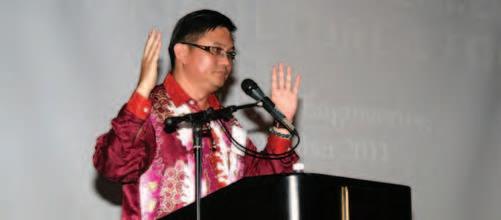
A seminar on “Career Success Inspiration” from four successful DABE and DFPE alumni was the other highlight of the day. The distinguished alumni were Ir. Kumar Subramaniam, Project Manager and Consulting Engineer from SGT Konsult Sdn Bhd; Mr. Chan Kah Whye, Director of Maxtwo Engineering & Services Sdn Bhd; Mr. Tay Cheow Hwang, Production Engineer, Nestle’Manufacturing (Malaysia) Sdn Bhd; and Ir. Hj. Izhar Mahmood, Director of Plantation Operations, EPA Management Sdn Bhd. They shared valuable advice and their success stories after having been involved in the agricultural and food engineering industries for more than 10 years.
Figure 1: Mr. Chan, Director of Maxtwo Engineering & Services Sdn Bhd, sharing his success stories a er more than 10 years of involvement in the industry
Figure 2: The “Engineering a Career in Agriculture and Food” programme was jointly organised by IEM and UPM
Figure 3: Fa n Abdul Rahman and Fathin Ayuni Azizan sharing their experiences on the mechanisa on of apple picking opera on using robo cs and image processing, as interns at the Center for Precision and Automated Agricultural Systems, Prosser, Washington
Figure4:Postersandboothsshowcasing outstanding and successful researches
Figure 5: Student projects in agricultural and food engineering
The final event of the day was the presentations of the Students MobilityProgrammebyseveralgroupsofDABEandDPFEundergraduate students who shared their learning experiences at the international universities they visited during the last semester break. Two of them went to the University of Florida, the United States, for an internship programme at Citrus Research and Education Centre for 10 weeks. Ngu Wei Pin and Lee Jia Ni, who are final year students of the Bachelor of Agricultural and Biosystems Engineering, shared their hands-on experience on research activities at the centre on the mechanisation of the citrus industries in Florida. They also talked on some interesting educational and cultural visits they made during the internship.
Another two students from the same course, Fatin Abdul Rahman and Fathin Ayuni Azizan, went to Washington State University, US, and worked as interns at the Center for Precision and Automated Agricultural Systems in Prosser, Washington.Apart from the educational and cultural learning experiences, they shared their study on the mechanisation of an apple picking operation using robotics and image processing. On the other hand, three Bachelor of Process and Food Engineering undergraduate students went to Universitat Zu Berlin, Germany, for a summer course on “Urban Agriculture”. Tan Mei Mey, Wong Chiew Chan and Gan Kok Yong, jointly presented a very interesting talk on the current practice of urban agriculture in big cities such as Humboldt in Germany.
ThefinalpresentationwasfromNorAmiraFarhanaHarun,NuratikaAli, Nur Salihah Buang, Nurul BuhirahAbd Rahman and LiyanaAnnisa Zaini, who were undergraduate students of Process and Food Engineering. These students spent their semester break at Fatih University, Turkey, for a period of two weeks. They presented an interesting learning experience on the educational and cultural heritage of Turkey since the early Ottoman Empire.
Showcases of outstanding and successful research and findings in agricultural and food engineering from the faculty members of both departments were exhibited in parallel during the full day event. There were booths featuring research on robotics and mechanisation such as Conceptual Agricultural Robot, Pineapple Multi-peeler and Automated Blender-Cooker for Paste Making, and also posters showcasing other fields of research such as GIS and remote sensing, bio-information systems, soil, water and environmental engineering as well as food process and production engineering. The exhibitions aimed not only to be a platform for researchers and faculty members to highlight their work and latest findings to the public, but also to attract students and introduce innovation and engineering design in their daily lives.
The director of the programme, Dr Samsuzana Abd Aziz, said the event had successfully enhanced the understanding of agricultural and food engineering not only to college students, but also to high school students, teachers, parents and the general public. ■
2) Notification of Events
Southern Branch recently invited Mr. Yale Wong, Managing Director of Ecoclean Technology Sdn Bhd, to present a half-day talk on stormwater management using the Continuous Deflective Separation (CDS) technology on 21 May 2011 at The Zon Regency Hotel, Johor Bahru. The talk was chaired by Ir. Dr John Eow, and was attended by more than 50 participants.
Forthefirstpartofhistalk,Mr.Wongexplainedtheconcept of CDS technology, which is an innovative non-blocking screening technology for the separation of solids from liquid streams. Unlike direct screening, CDS utilises the principle of indirect screening where the particles are carried by the flow acrossthefaceofthescreen.This,inconjunctionwithhydraulic balancing across the screen, delivers a process capable of removing solids from high flows of water and wastewater. Figure 1(a&b) illustrates the comparison between a normal direct filter screen and the CDS indirect screening technology. With normal direct filter screening, particles impact directly on the screen and eventually cause blinding [see Figure 1(a)]. With CDS indirect screening, particles sweep past the screen which remains clear [see Figure 1(b)].
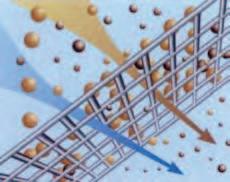
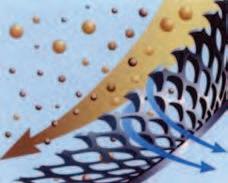
The indirect CDS Screening Technology utilises a cylindrical screen with tangential inlet for the fluid above the screen and a sump below the screen. The tangentially introduced flow rotates inside the screen, keeping the screen surface free of solids while the fluid passes through each of the apertures in the screen. Solids will be retained inside the screen on the rotating column of fluid if of neutral density, sink into the sump if settleable, or float to the surface of the fluid in the unit. Characteristics of the CDS technology include nonblinding operation, high loading rates (up to 32m³/s), capture performancethatisindependentofflowrate,andlowoperation and maintenance requirements and no electrical power cost. Figure 2 illustrates a CDS unit in operation, and its performance is summarised inTable 1. It is claimed that CDS is the only non-blocking screening technology independently validated by world-class research organisations such as
CSIRO (Commonwealth Scientific & Industrial Research Organization), CRCCH (Co-operative Research Centre for Catchment Hydrology) and UCLA (University of California Los Angeles). In Malaysia, successful CDS stormwater management projects include several rivers within the Iskandar Development Region, Puteri Harbour, Nusajaya, Medini Development, Legoland, Putrajaya precincts, Bandar Botanic (Parcel A) in Klang and the University of Nottingham in Selangor.
The CDS technology has also been adapted to operate in raw sewage. There are also CDS units in use for screening of coolants, food processing, potable water intakes, coal fines separation and wash-down yards. Today, the range of products include surface and rainwatertreatmentdevices,sewerminingprocessappliances for water re-use and smart water plants to class A water reuse. These units remove solids that include man-made litter, organic material (leaves, twigs, etc), and sediments from the influent.
Recently, Shell has used CDS technology for stormwater management, and the Shell 3 building in Cyberjaya has recently won the country’s first LEED certified Gold category Green Building.
Lastbutnotleast,IEMSouthernBranchisverygratefultoMr. Wong for his invaluable contribution to the knowledge of local practising engineers in the field of stormwater management. The speaker was presented with IEM souvenirs by Ir. Mohd Khir Muhammad, the Chairman of IEM Southern Branch. For more information on CDS Screening Technology, Mr. Wong can be contacted at yalewong@ecoclean.com.my ■
Table 1: Typical performance of the CDS screening technology
Figure 1(a): Normal Direct Screening
Figure 1(b): Indirect CDS Screening Technology
Figure 2: CDS unit in stormwater treatment opera on
visit was organised by the IEM Technical Committee (TC) on Wind Loads which is chaired by Ir. Assoc. Prof. Dr Jeffrey Chiang. The other Technical Committee members involved in the visit are Ir. MC Hee, Ir. Tu Yong Eng and Mr. Tan Huvi Vein. Incidentally, Mr. Tan is also a senior officer of the Malaysian Meteorological Department (MMD) and was instrumental in organising the visit on behalf of the Technical Committee.
On 23 April 2011, the delegation departed by bus from Bangunan Ingenieur at about 8.30am, and reached the Meteorological Station at Cameron Highlands at about 12.00pm, via the Tapah exit point along the North-South Expressway.Theuphilldrivewasquitelongandwinding,but the traffic was sparse due to the off-peak tourist season.
On hand to welcome the delegation was the Officer-inCharge, Mr. Ong Lian Poh, who graciously took the visitors for a sumptuous lunch at a nearby restaurant in Brinchang town.
After lunch, Mr. Ong proceeded to give a first-hand hour-long tour of the station’s facilities, in particular, the measuring instruments at the rear compound of the station. In addition, the visitors were also shown the newly constructed tower block which houses some of the more impressive and latest computerised recording machines, whichtookuponeoftheupperfloors.Windspeedrecordings are all automatically captured and sent electronically to the main MMD Headquarters in Petaling Jaya. As in most parts of the Peninsula, wind speeds there are dominated by thunderstorm downbursts.
The objective of the visit was for the TC members to have a first-hand look at the typical layout of wind speed measuring instruments in MMD stations located
in Peninsular Malaysia. Since the TC has been tasked to review the current Malaysian Wind Code MS1553:2002, there is a possibility that the wind speed data presented therein may have to be updated. The committee is also considering the possibility of adopting Eurocode 1-4 Wind Actions, like what Singapore has done. It has to be mentioned here that the current MS1553 prescribed 3-second gust wind speeds, which is suitable for Malaysia due to its frequent thunderstorm winds, whereas Eurocode 1-4 recommends 10-min hourly wind speeds which is more suited for prevalent winds found in northern Europe. More in-depth study has to be carried out by the IEMTC, provided the requested financial support is forthcoming from the Department of Standards Malaysia (DSM).
A previous visit by the TC was made to the MMD station located at the old Subang Airport, which is on flat terrain with hillslopes about 2-3km away. For the Cameron Highland visit, the committee had a chance to observe how the various wind speed measuring instruments were sited atop a steep hill which is located a short distance away from the main street of Brinchang town. Besides the wind speed detection instruments, other equipment are also available, including devices for measuring air quality (as part of the global atmosphere watch station), rainfall collection and other readings. The location is good as there are minimum obstacles all round, although the surrounding hillslope areas are being cut and used for resort development. Very soon, the terrain in the vicinity may change with more highrise resort buildings being built for holidaymakers
The delegation was surprised to learn that a nuclear radiation detection facility was also housed in the MMD station compound – it sits right next to the existing building. It is exclusively off-limits to visitors, hence Mr. Ong could only give a verbal explanation of its function, which is essentially to constantly monitor the amount of radiation in the surrounding environment emitted from local as well as regional sources. The recent triple disaster on 11 March 2011 in Eastern Japan came to mind, with the nuclear plant crisis which followed the magnitude 9.0 earthquake and the ensuing 10m high tsunami hitting the eastern shores of Japan.
As a matter of interest, the area in the vicinity of Ipoh city generally has a higher wind speed than other parts of Peninsular Malaysia. For example, for a return period of 50 years, the wind speeds for selected urbanised areas are as follows:
Figure 1: Mr. Chan, Director of Maxtwo Engineering & Services Sdn Bhd, sharing his success stories a er more than 10 years in the industry
Towards the end of the on-site briefing and tour, Mr. Ong treated the visitors to some of the highlands’ renowned fresh fruits and pastries from nearby farms. At the end of the visit, the head of the delegation, Ir. Assoc. Prof. Dr Chiang thanked the gracious host for the kind hospitality extended to the IEM delegation, and presented a souvenir to Mr. Ong.
The delegation departed from the station at 4.30pm, and the bus arrived safely back at the IEM Headquarters at 7.30pm. The visit had been very enlightening and refreshing in more ways than one, and the IEM TC would like to thank MMD for kindly consenting to and hosting the visit.
3: Further demonstra on was given on a sub-grounded rain catchment measuring device.
The TC will continue the collaborative effort between its Working Group 2 with the MMD technical staff, by jointly carrying out rigorous wind speed data analysis, based on the numerous wind speed records of all the MMD stations. Once the data is harmonised, a set of reasonable and accepted wind speeds for all parts of Peninsular Malaysia can be established. ■
Table 1: Typical wind speeds in major loca ons [Source: MS1553:2002]
Figure 2: Mr. Ong explaining the use of the hydrograph and thermograph instruments
Figure
2July2011,theHighwayandTransportationEngineering Technical Division (HTETD) organised a technical visit to the Swing Bridge project at Sungai Prai, Penang. The technical visit was hosted by MMC-Gamuda Joint Venture Sdn Bhd, the main contractor for the northern Electrified Double Track Project (EDTP) between Ipoh and Padang Besar.
The visit was attended by 15 members of IEM led by AFETD committee member Ir. Dr Jumat Ahmad. The group arrived at the site office at around 11am and was welcomed by the project director for the design and construction team, Dr Khoo Ping Sen who provided the technical briefing
The technical briefing covered the development status, project general arrangement, swing bridge moving mechanism,andchallengesencounteredattheconstruction site. Estimated at more than RM100 million, the swing bridge was designed by Waagner-Biro Stahlbau AG from Vienna, Austria. The electrification, signalling and communications systems are from Balfour Beatty Ansaldo Systems JV Sdn Bhd, United Kingdom. Basic details of the Swing Bridge are
indicated in Table 1.0.
The 329km long northern EDTP package comprises the design and construction of the infrastructure and systems. The contract involves the laying of two new parallel tracks to replace the existing single track. It also includes the construction of new stations, bridges, as well as the installation of modern electrification, communications and signalling systems. According to Dr Khoo, the new swing bridge, which is part of the EDTP package, is already more than 45% complete. The bridge is scheduled to be ready by 2012.
Table 1.0: Swing Bridge Details
Once completed, the bridge will be an iconic structure on the Butterworth Outer Ring Road (BORR). The bridge that crosses Sungai Prai will have a 90m mid-span section. Through a unique design, the bridge is able to rotate and swing. This was designed to allow unrestrictedmovementof ships and marine vessels navigating along Sungai Prai. Table 2.0 shows the design characteristics of the bridge.
The new Sungai Prai Swing Bridge will replace the existing 40-year-old single-track railway bridge which was built by Keretapi Tanah Melayu Bhd (KTMB) in the 1960s. Six piers will be constructed to support the overall bridge length of 282m across Sungai Prai. The new swing bridge will be located between Pier No. 4 and Pier No. 6 and will be electrohydraulic driven. The swing bridge will be monitored continuously from the KTMB control station. It will swing and operate at a 72.3-degree angle rotation with Pier No.5 functioning as the pivot for the moving mechanisms. Table 3.0 indicates the design criteria for the bridge.
• Ballastless Track System
• Steel Sleepers Supported On Steel Deck
• Sail Structure Formed By Steel Plates
• Vessel Protections System Provided
• Ballasted Track System
• Conventional Beam & Slab System
90m
approx. 1100 tonnes approx. 72.3 degree
Electro-hydraulic operated
approx. 5 minutes to fully open and vice versa
The project director admitted that there might be some challenges in completing the project. The main issue relates to the design and installation of the electrical and hydraulic interfacing system with the rail locking mechanisms to ensure reliability of locking during the open or close operation.
The lift and turn mechanism at the centre pivot has to be engaged or repositioned correctly after the rotation or swing. This is to ensure that the track is properly locked. Nevertheless, he was confident that the challenges would be overcome, and not cause any delay in the delivery schedule.
After lunch, the delegates were brought to visit the site. We managed to see the progress of piling works and the completed approach on the Butterworth side. We noticed how well the working area was organised by the experienced contractor. Some piling points for the bridge piers were driven by the stationed piling barge at Sungai Prai. We also witnessed the formwork preparation for the bridge slab deck and substructure platforms at the fabrication yard.
The technical visit ended after a site photography session. Through this visit, the participants were able to gain a better understanding of design techniques, applications and construction of the swing bridge. ■
Table 2.0: Sungai Prai Design Characteris cs
Table 3.0: Sungai Prai Bridge Design Criteria
Photo 1: Completed piling work forpier
Photo 3: A group photo of the HTETDdelegates
Photo 2: IEM showing its appreciaontothehost
Photo 4: An ar st's impression of thenewswingbridge
be read as "ß" in Figure 3, while the formula in the first column should be read as P γ γ γ eff². On page 19, the first
while the first equation in the right column should be read as
The Ins tu on would like to thank all contributors for dona ng generously towards the IEM Building Fund HELP US TO PROVIDE BETTER SERVICES TO YOU AND TO THE FUTURE GENERATION (The dona on list to the Wisma IEM Building Fund is published on page 41)
Highway and Transportation Engineering Technical Division (HTETD) held a one-day seminar on “Road Safety Audit” at the C&S Lecture Room, Wisma IEM on 28 March 2011. The talk was conducted by three speakers, namely, Ir. Mohd. Shahrom Ahmad Saman, Ir. Richard Wong Chuen Fun and Ir. Aik Siaw Kong.
Ir. Mohd. Shahrom is an accredited road safety auditor. He is one of the leading experts on road safety auditing and accident investigation in the Public Works Department (PWD). According to him, road safety audit is a formal examination of the planning, design and construction of a road project to identify any potentially unsafe feature or operational arrangement that may adversely affect the safety of any road user.
The audit is conducted by independent and qualified examiners. In fact, the road safety audit is an effective accident prevention strategy, while the blackspot technique is useful as an accident reduction countermeasure. He went on to introduce the “Nota Teknik (Jalan) 25/07 - Guidelines on the contents of a road safety audit”.
Published by the PWD, the guidelines are used when evaluating new or existing road design in the country to ensure that road safety issues are properly addressed. Ir. Mohd Shahrom shared various case studies with the audience and discussed the deficiency of road design and operational problems. He also highlighted different types of countermeasure strategies to overcome these deficiencies.
The second speaker was Ir. Wong, who is the principal of RW Consultancy and an accredited road safety auditor who has more than 25 years of experience. He highlighted the five important stages in conducting the road safety audit, namely, the planning and feasibility, preliminary design, detailed design, construction and pre-opening, and operation stages.
He indicated the important features to be considered in each of these stages and highlighted the relevant guidelines used. Some of the important elements which have to be considered are vertical and horizontal alignments, cross sections, sight distances, auxiliary lanes, traffic islands and kerbs, traffic signs and signals, road markings and delineation, street lights and clear zones, and road safety barriers.
The third speaker was Ir. Aik, Director of Pakatan Jurutera Pintar Sdn Bhd and a registered road safety auditor who has more than 25 years of experience. In his
presentation, he explained some common issues which are important to be considered during a road safety audit. He presented various case studies with drawings to highlight these issues.
Next,Ir.Aikdiscussedhowtheneedsofvulnerableusers are taken care of under a road safety audit. In addition, he also explained the types of information required in managing a road safety audit. This includes project scope, statement of project, guidelines, drawings, etc. He stressed that in order to achieve the optimal benefits from a road safety audit, the auditing process should start at the early stage and the auditor should be appointed as a team member to facilitate the design process.
Throughout the course, all three speakers had provided valuable information and cited case studies to enlighten the participants about road safety audit issues. It is hoped that the seminar has helped enhance the knowledge of the participants on this subject. The seminar concluded with an actively participated Q&A session and the presentation of IEM’s certificate and token as an appreciation to the speakers. ■
th Announcement
The Institution would like to thank all contributors for donating towards the Wisma IEM Building Fund. Members and readers who wish to donate can do so by downloading the form from the IEM website at http://www.MyIEM.org my or contact the IEM Secretariat at +603-7968 4001/5518 for more information. The list of the contributors as at 31 October 2011 are shown as in table below.
Ir. Aik Siaw Kong
Ir. Richard Wong Chuen Fun
Ir. Mohd Shahrom Ahmad Saman
first part of the Energy Series Course was organised by the IEM EETD on 12 January 2011 at Wisma IEM, Petaling Jaya. Attended by 50 participants, this part of the course focused on “Registered Electrical Energy Manager (REEM) – Challenges and Barriers”. The facilitator for the course was Ir. Lam Sing Yew, an experienced REEM who has completed numerous REEM energy assessments. He shared his experience on how to be effective in carrying out the duties and role of a REEM. Also discussed were the challenges and barriers faced at the customer plants, which he elaborated with a case study.
He commenced the course by highlighting the provisions of Section 23 of the Electricity Supply Act 1990 that has led to the ‘Efficient Management of Electrical Energy Regulations 2008’ being gazetted on 15 December 2008. He explained the various parts and sections of the ‘Efficient Management of Electrical Energy Regulations 2008’relating in particular to the requirements for compliance by parties related to the supply and consumption of electrical energy equal to or exceeding 3,000,000kWh over a period of six consecutive months.
HethendescribedthefunctionsanddutiesofaREEMand explained how the engagement of the REEM as an energy facilitator could help create value for business operations in the areas of management, production output, customers and suppliers. In order to be effective, it would be important for the REEM to possess the required capabilities and apply appropriate methodologies in executing his tasks.
Ir. Lam described the methodology that he has used by summarising it in six steps:
1) Planning and Organisation
2) Assessment
3) Identification of Options
4) Feasibility Analysis of Options
5) Implementation and Monitoring of Options
6) Continuous Improvement
The effectiveness of the REEM would help a company in the following areas:
1) Minimise energy wastage
2) Reduce production cost
3) Protect the environment
4) Green - Corporate Social Responsibility (G-CSR) Efforts
He then shared the challenges and barriers that he had encountered at customer plants in four different aspects:
1) Customers perception
2) REEM challenges
3) REEM barriers
4) Tough market conditions
He concluded the training session with a case study on the thought-provoking topic “Is the Registered Electrical Energy Manager (REEM) competent in the market to win customer engagement?”
Participants then engaged actively in the ‘Question and Answer’ session. Some participants highlighted the concern ofhowmuchconsultancyfeeshouldbechargedandwhether the market is willing to pay the auditing fee. The trainer responded that there is no standard guideline that governs the fees charged for consultancy work in the market. It is subject to the level of knowledge and the time involvement required for different energy audit tasks. Finally, he reminded the participants to look out for the second part of REEM –“Overview of Electrical Energy Equipment Management and Application” of the three-part Energy Series to complete the whole series of the training course. ■
Answer for 1Sudoku published on page 20 of this issue

